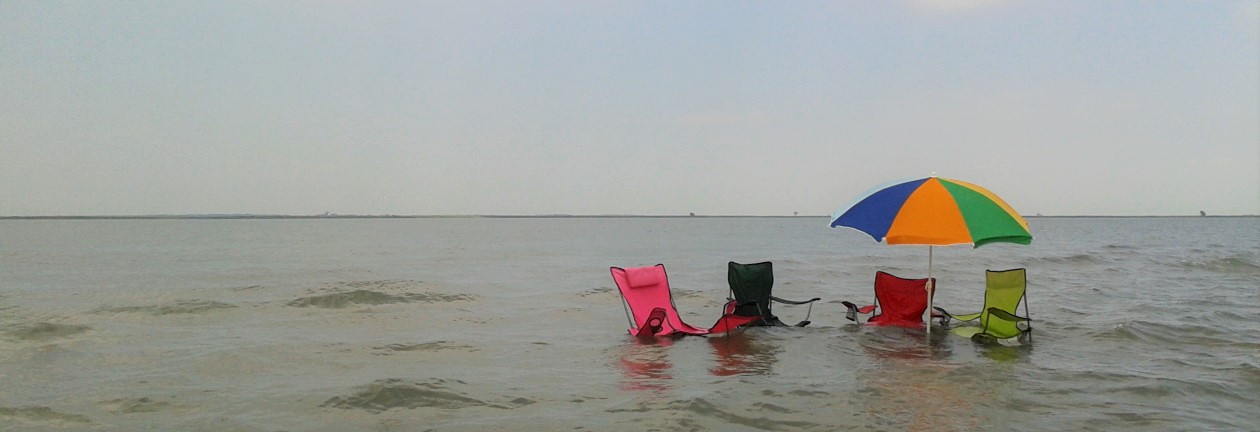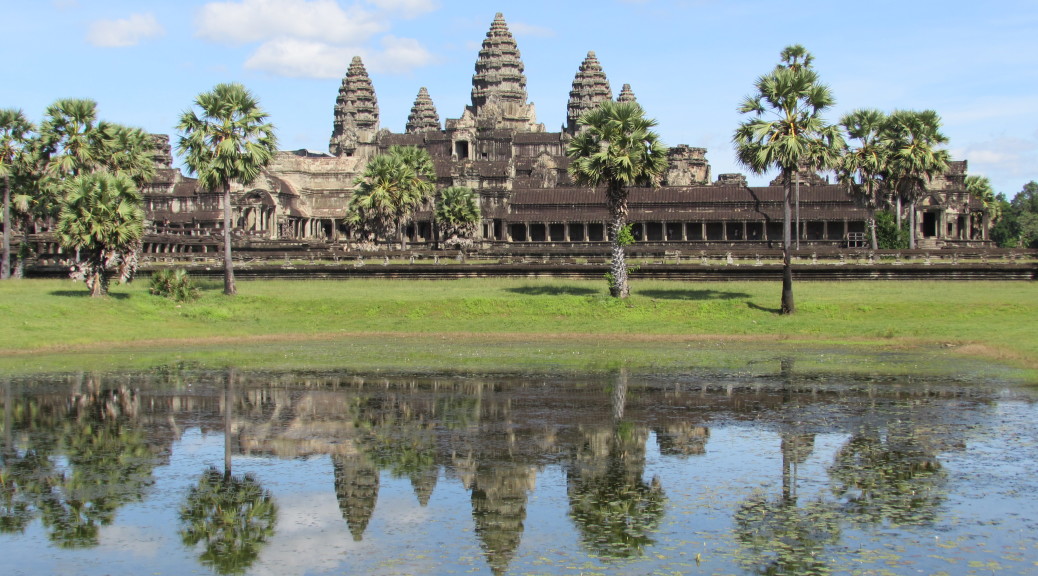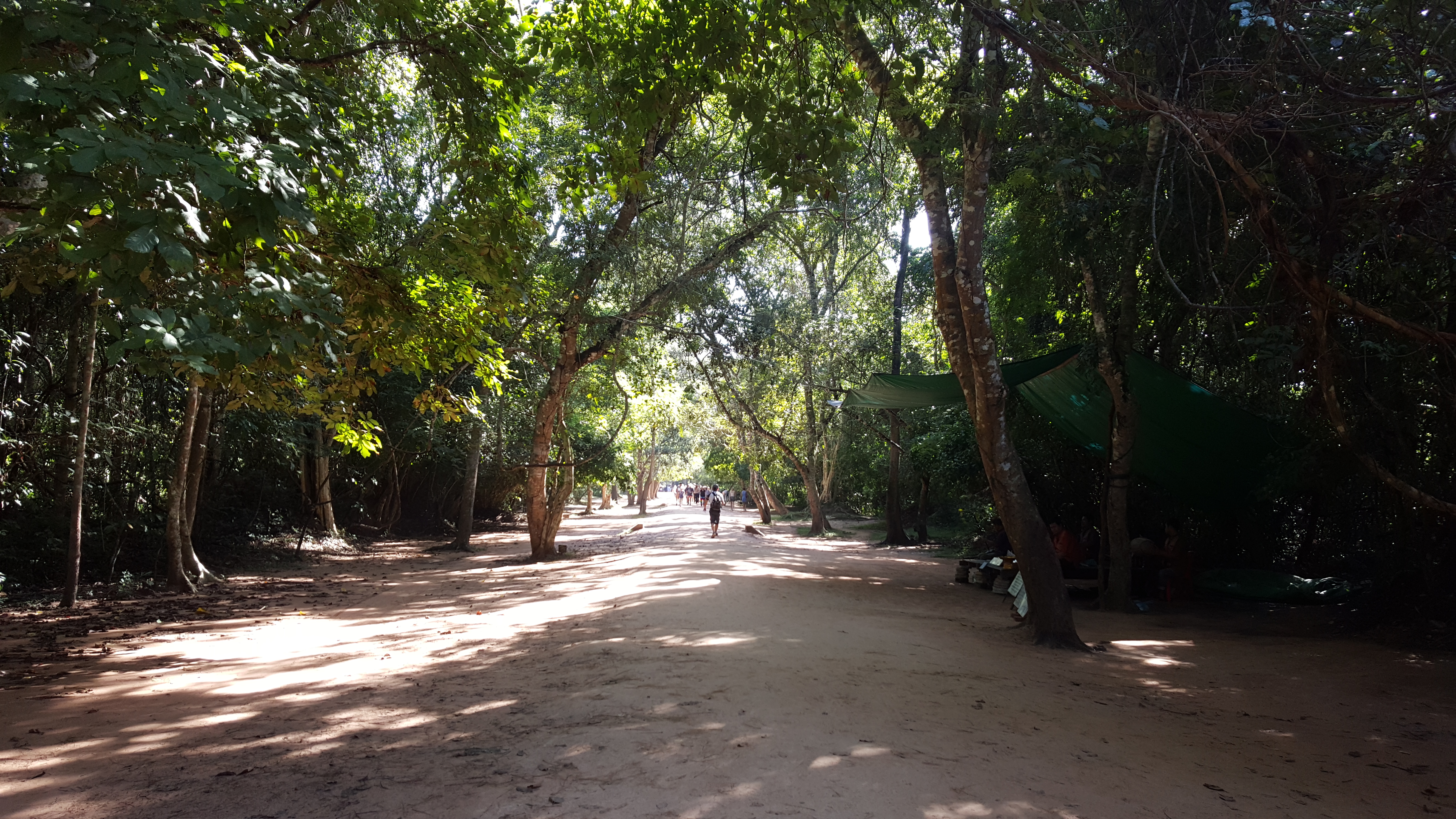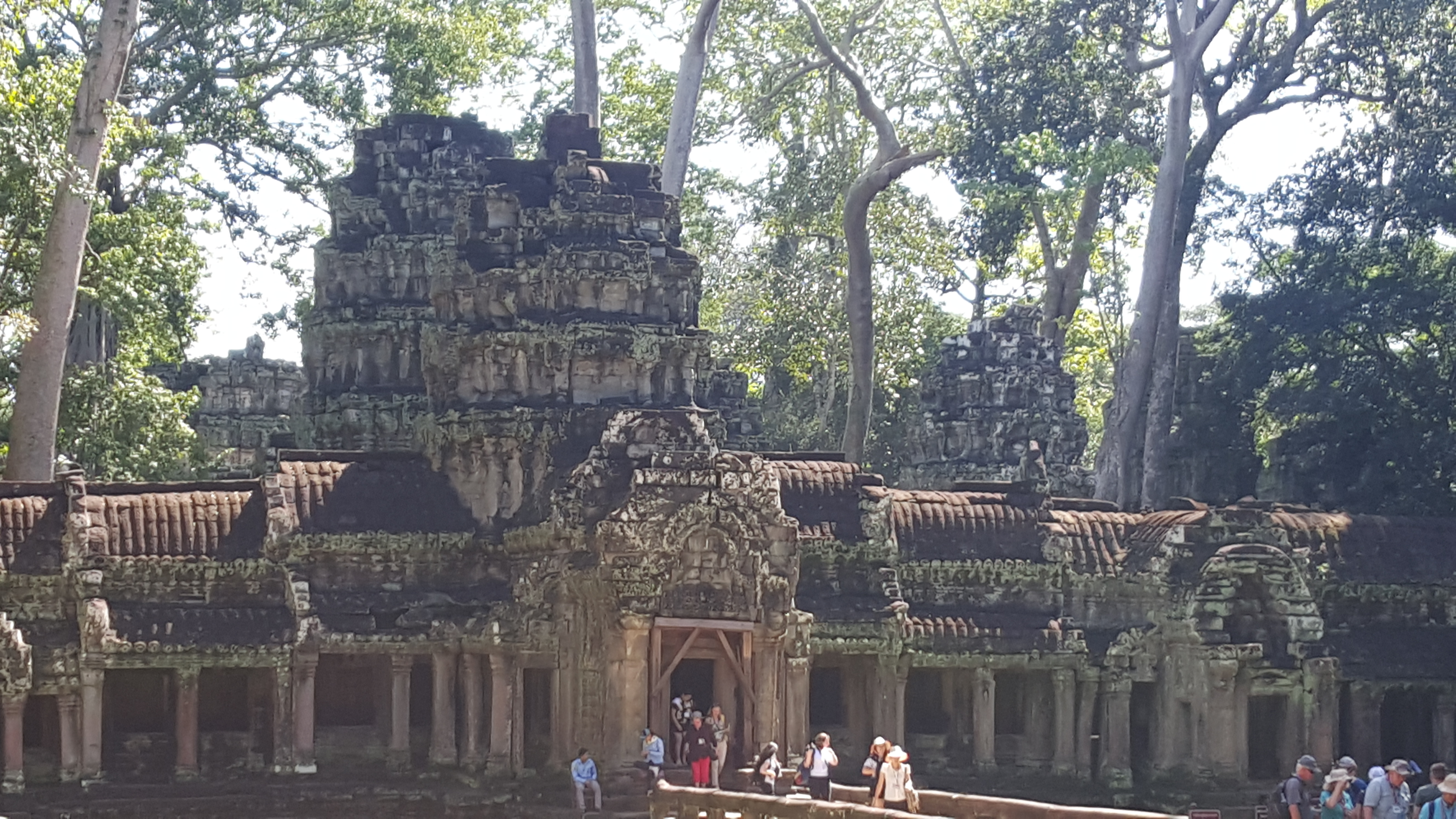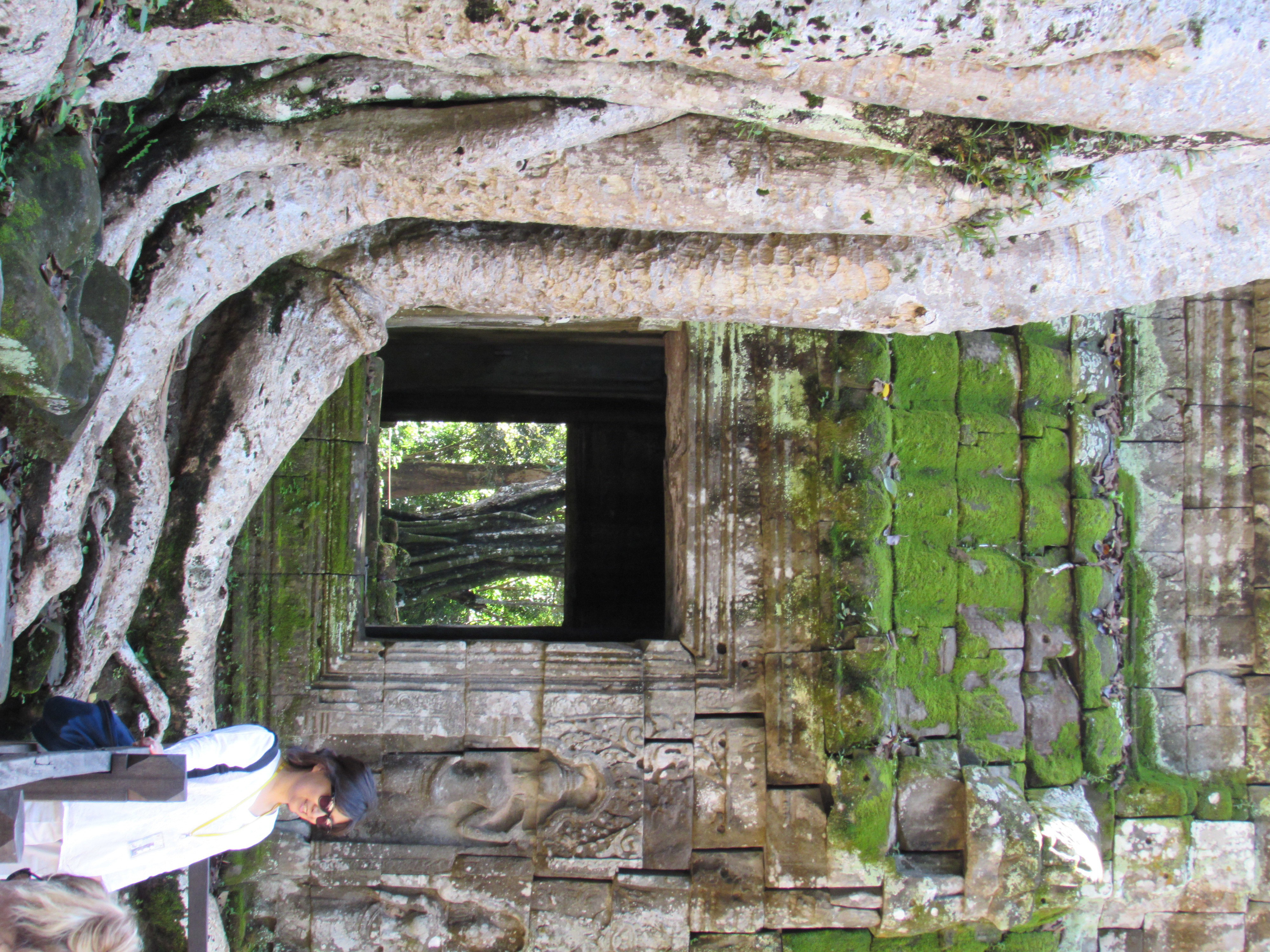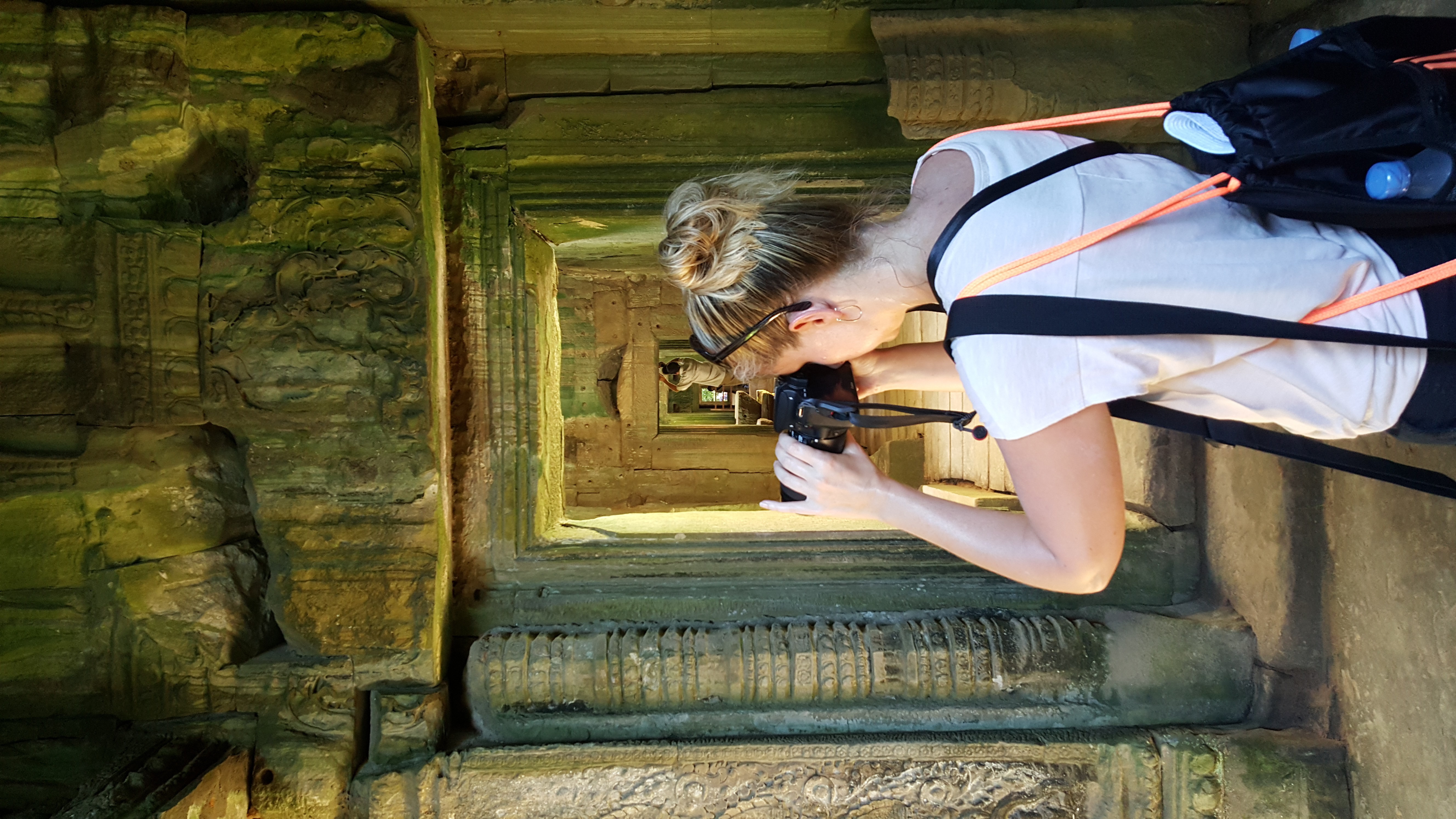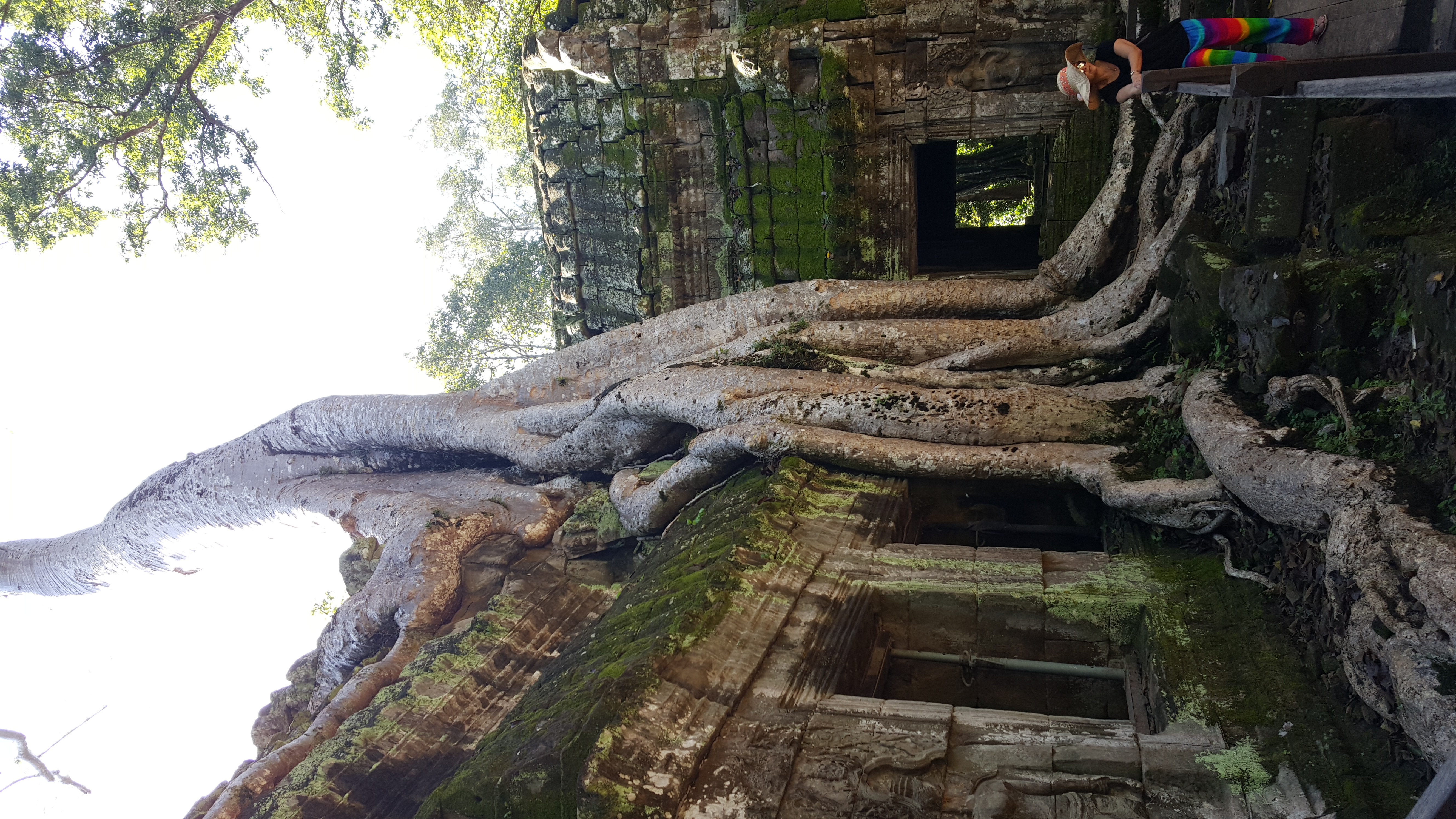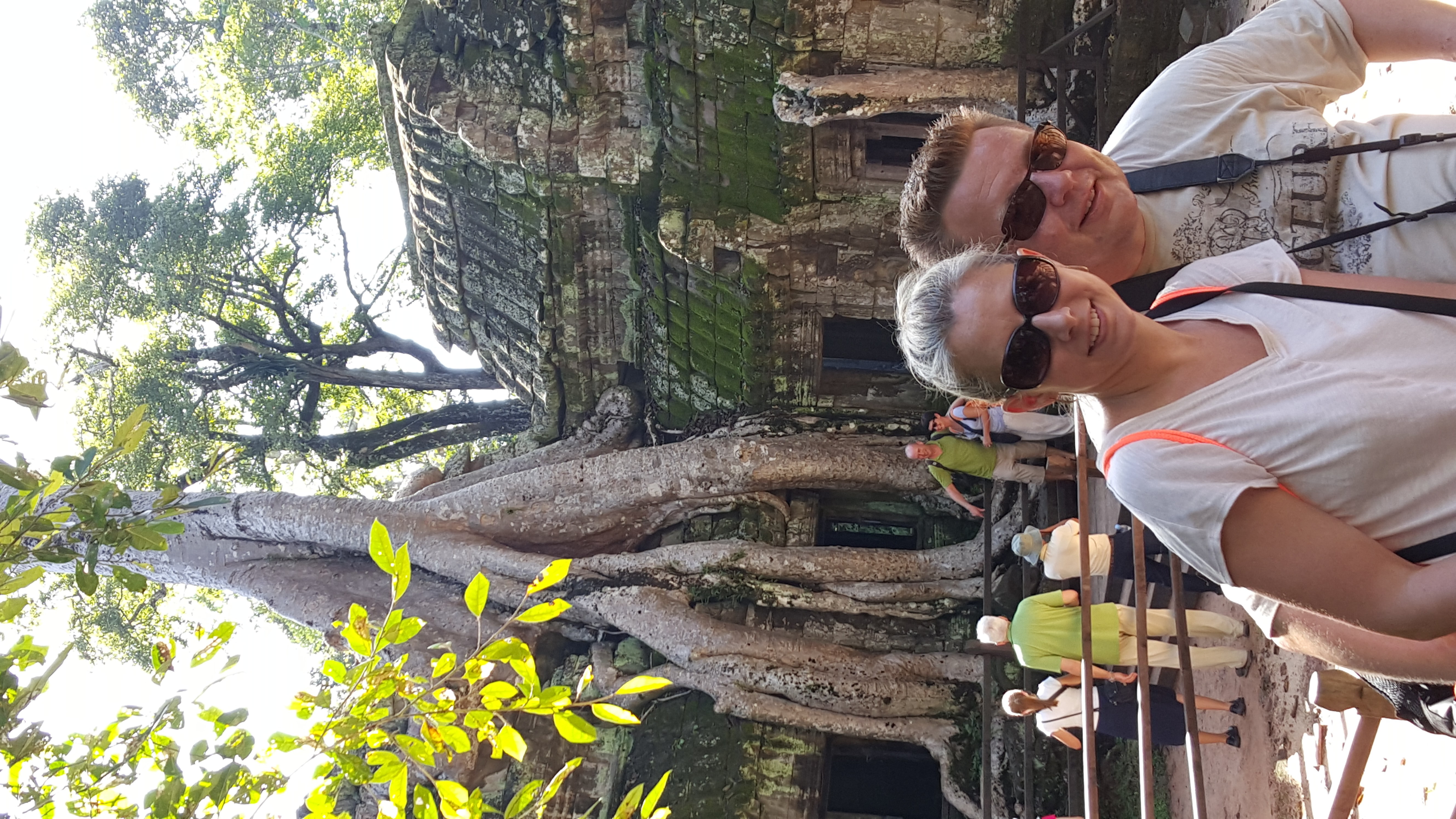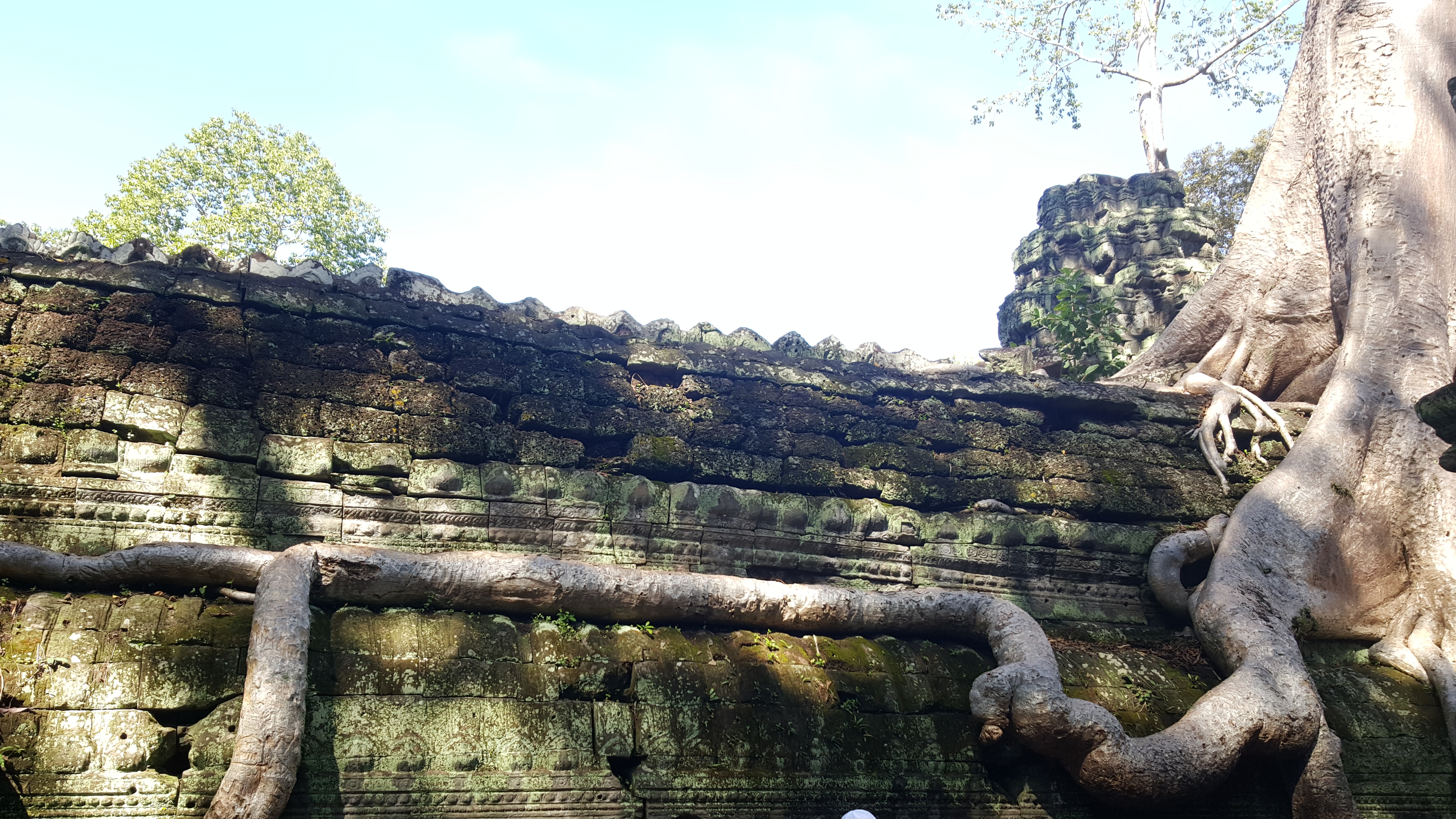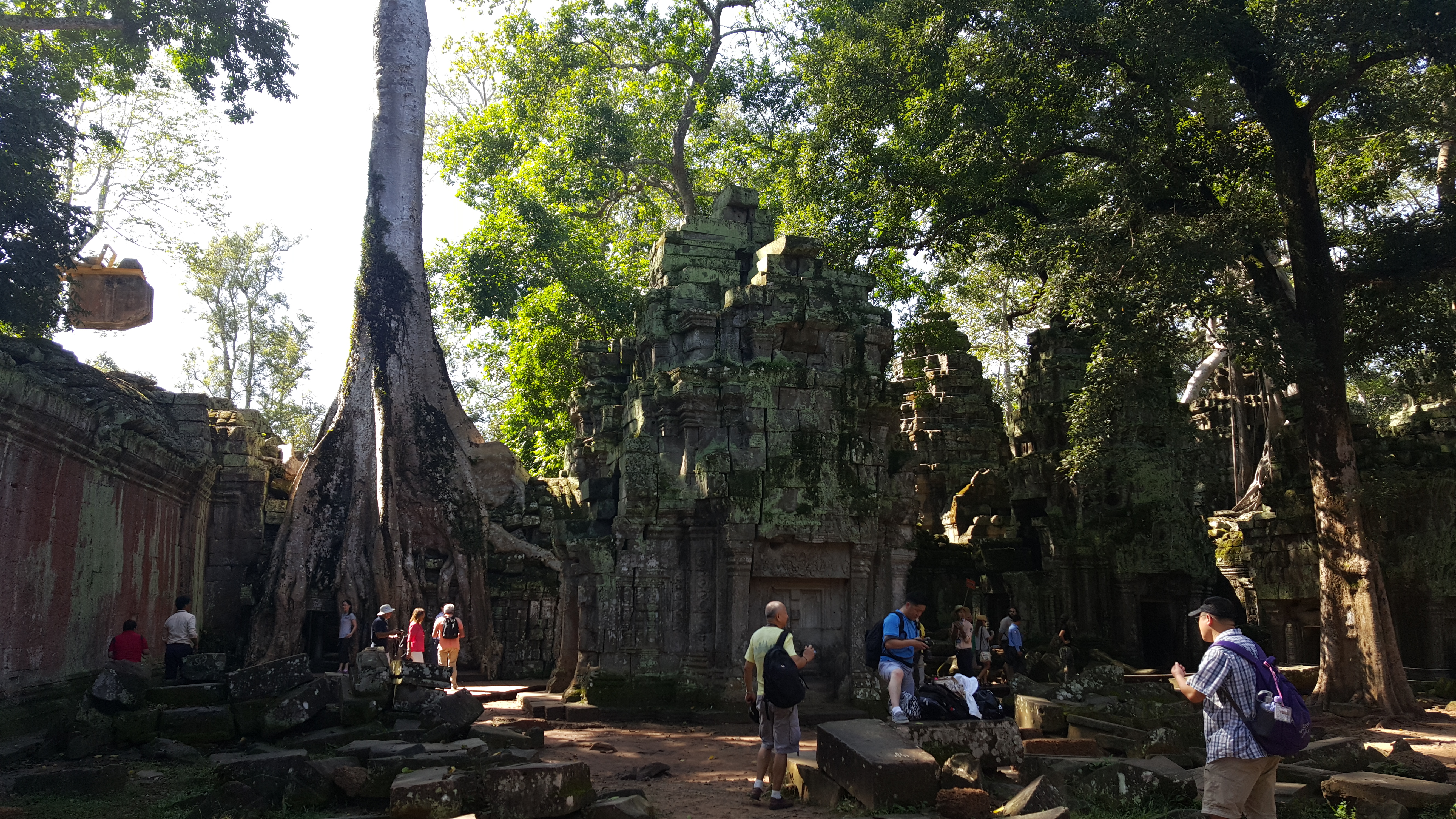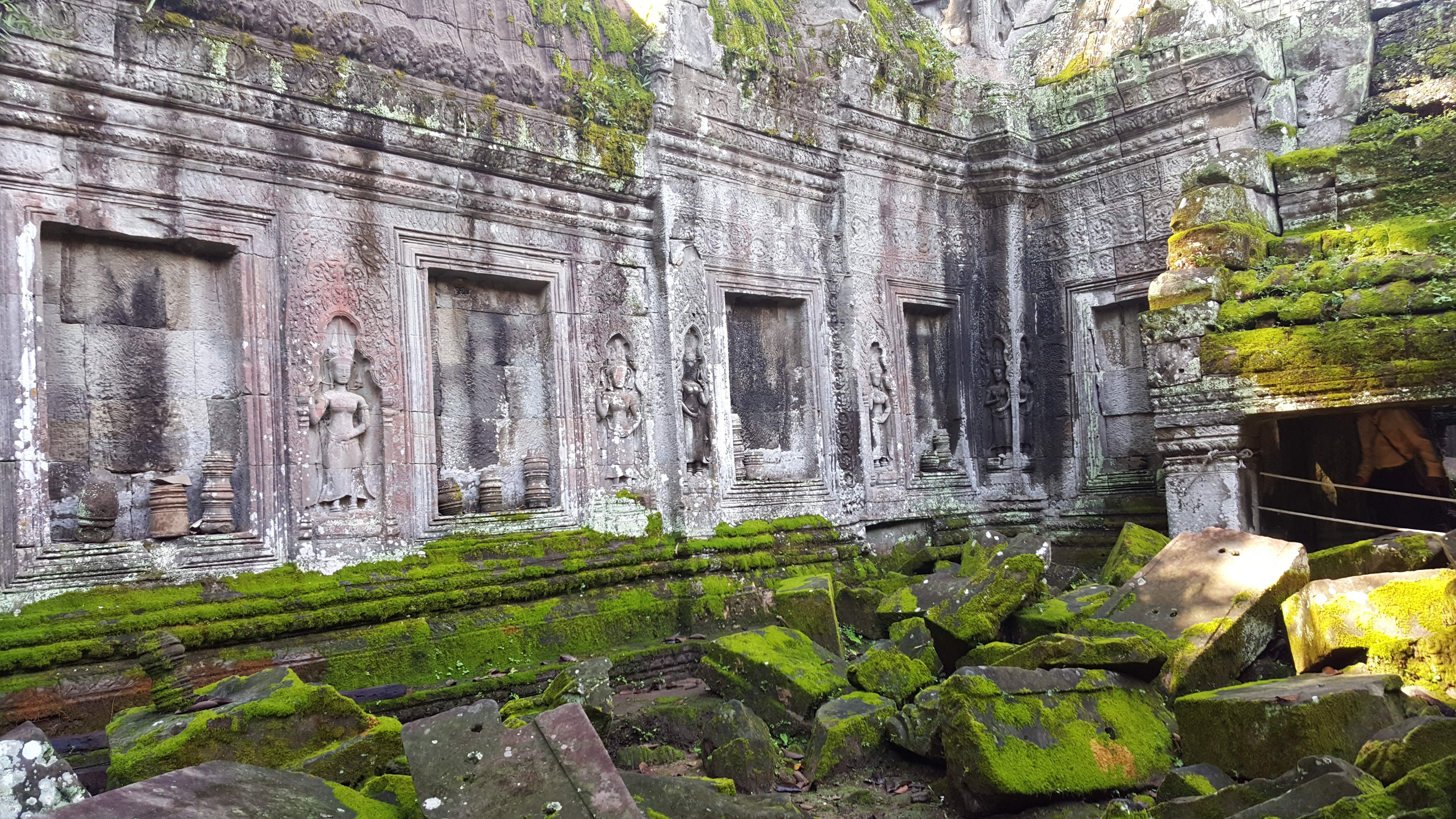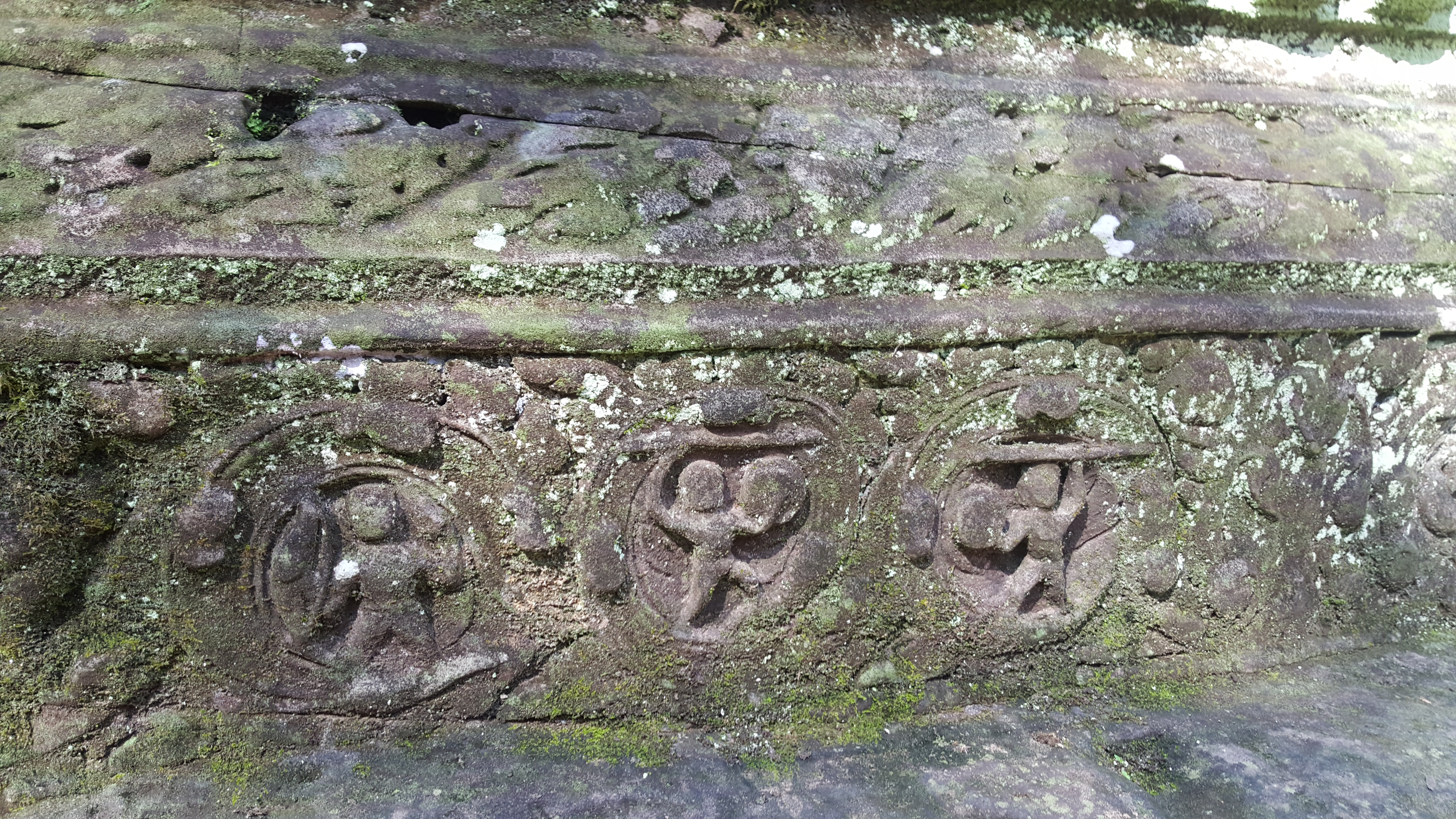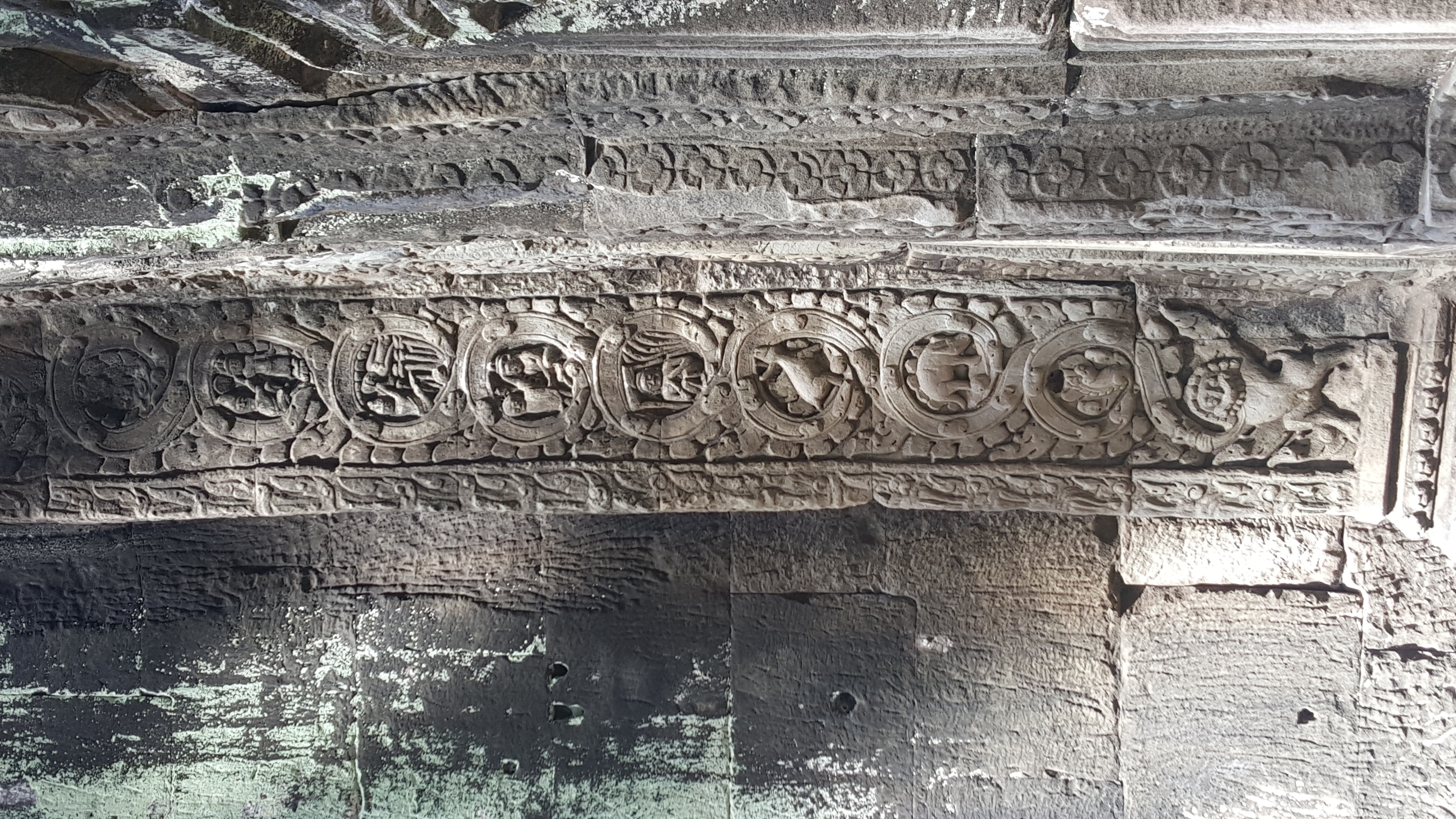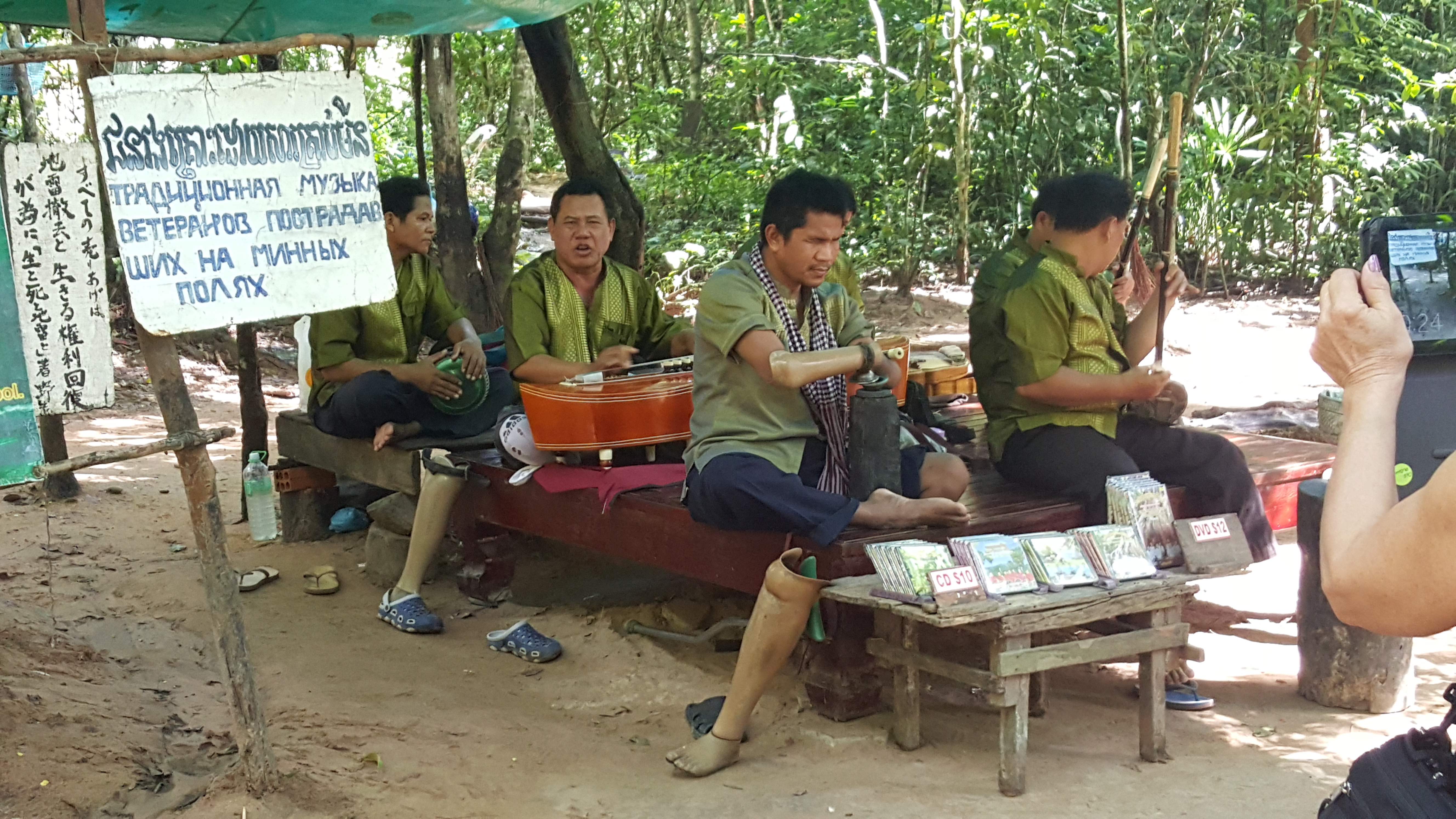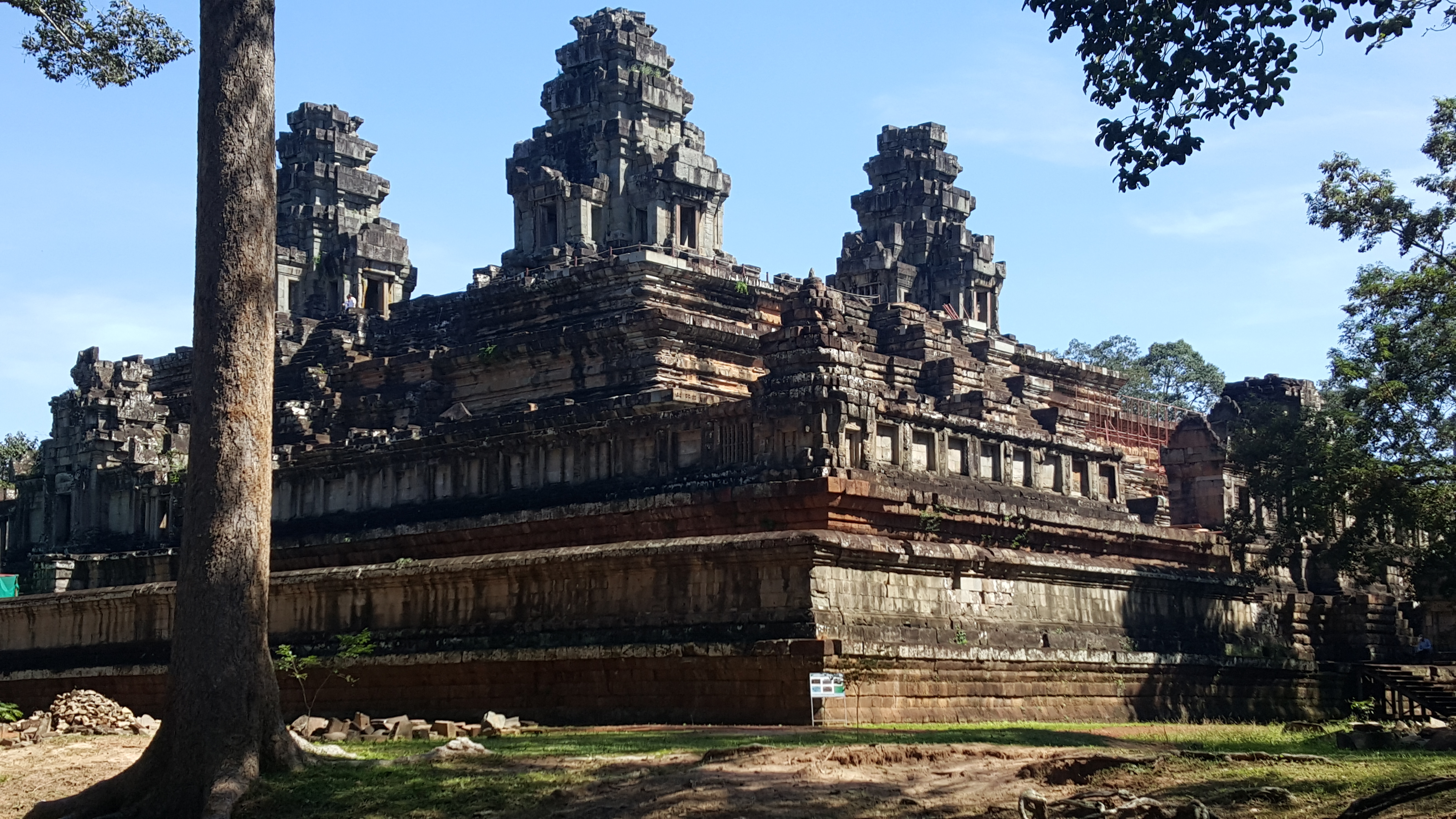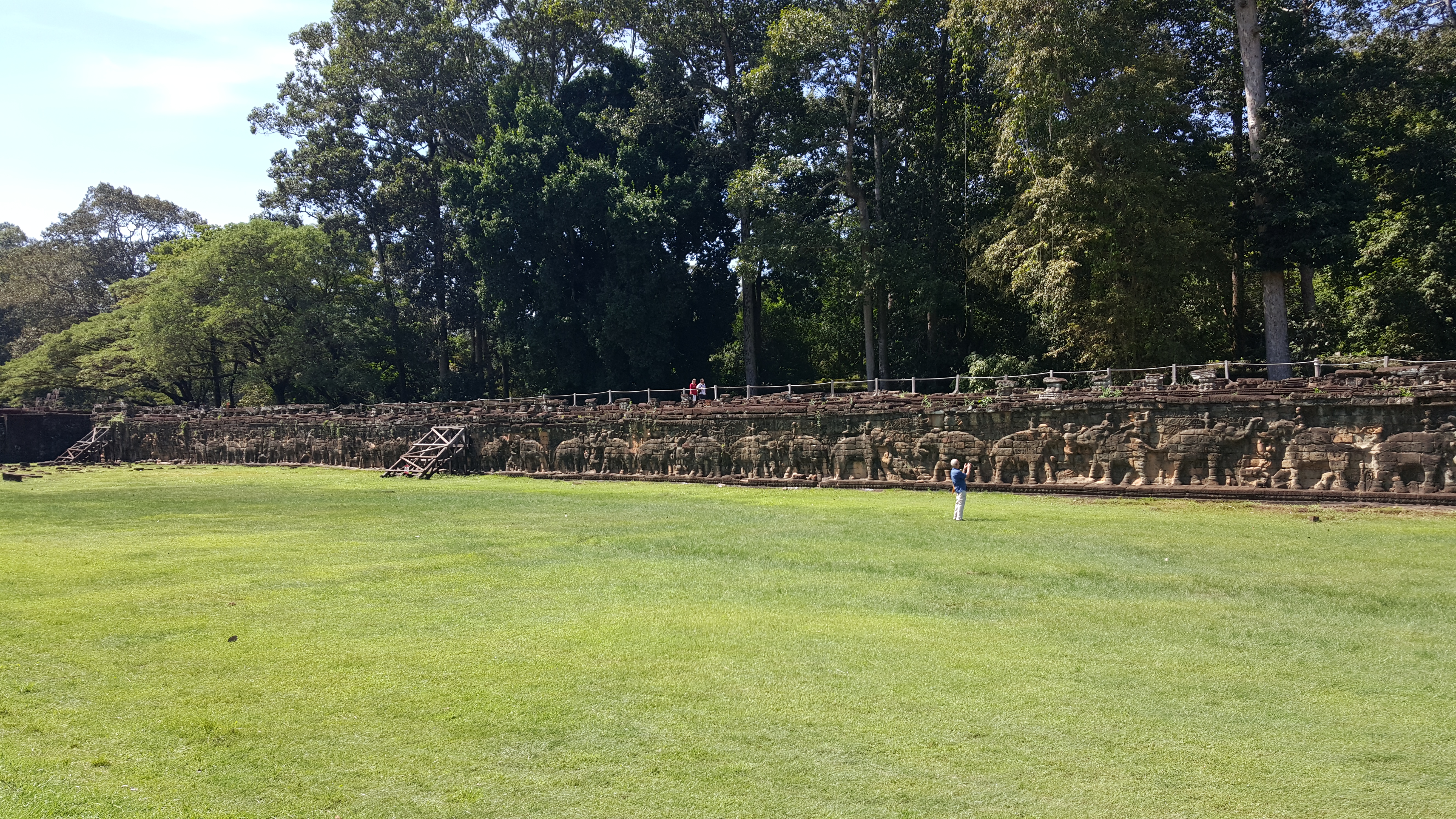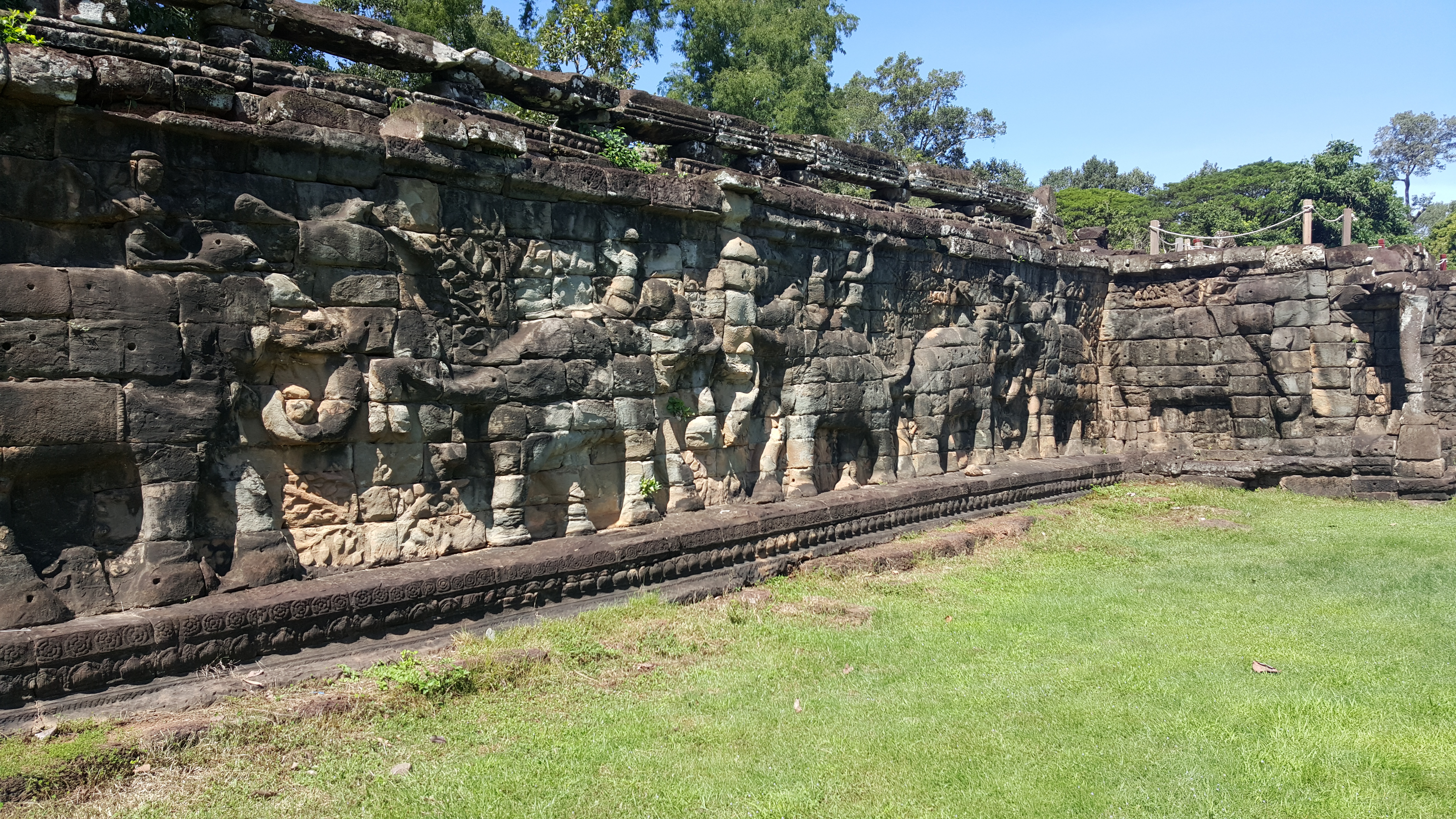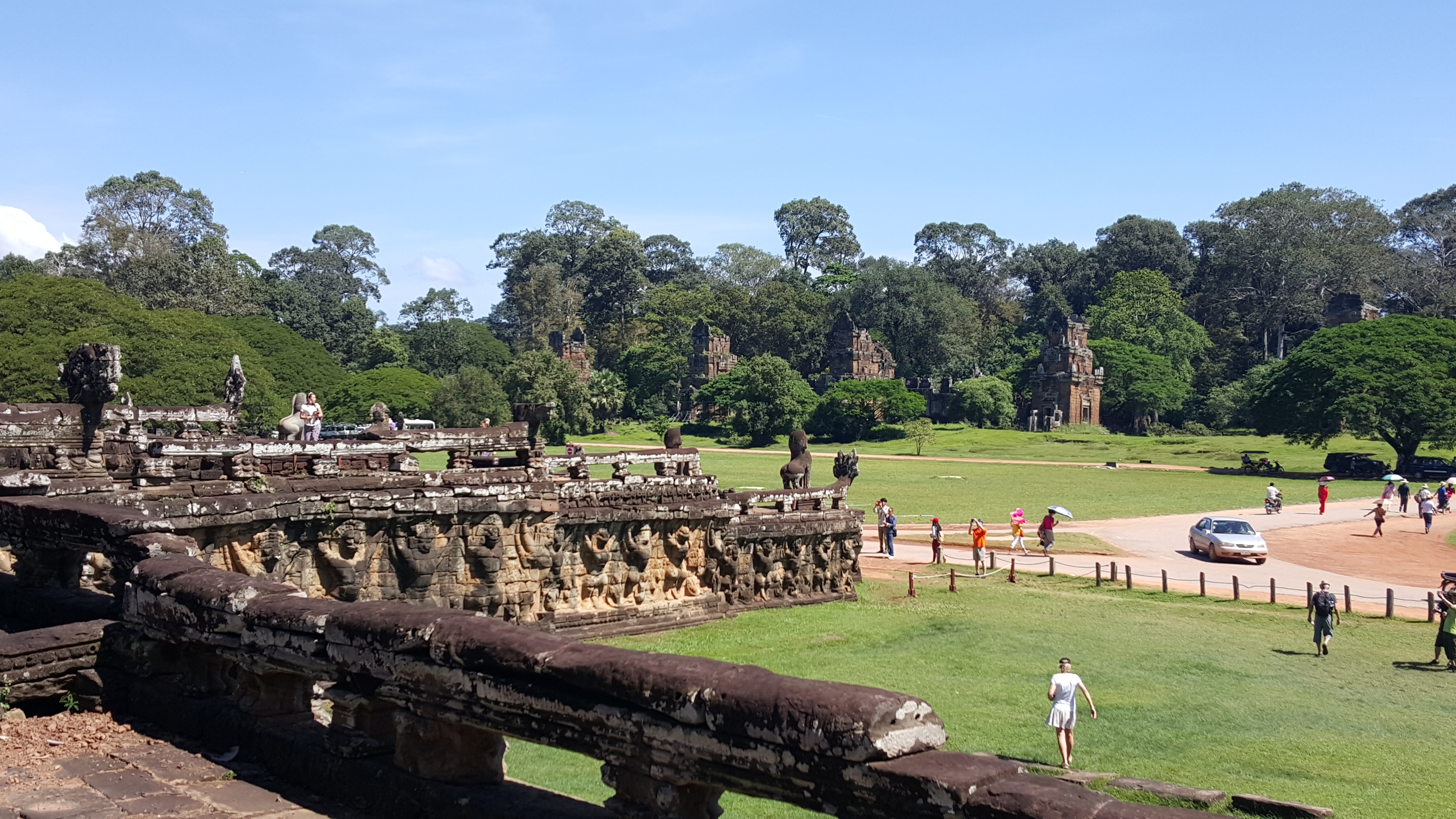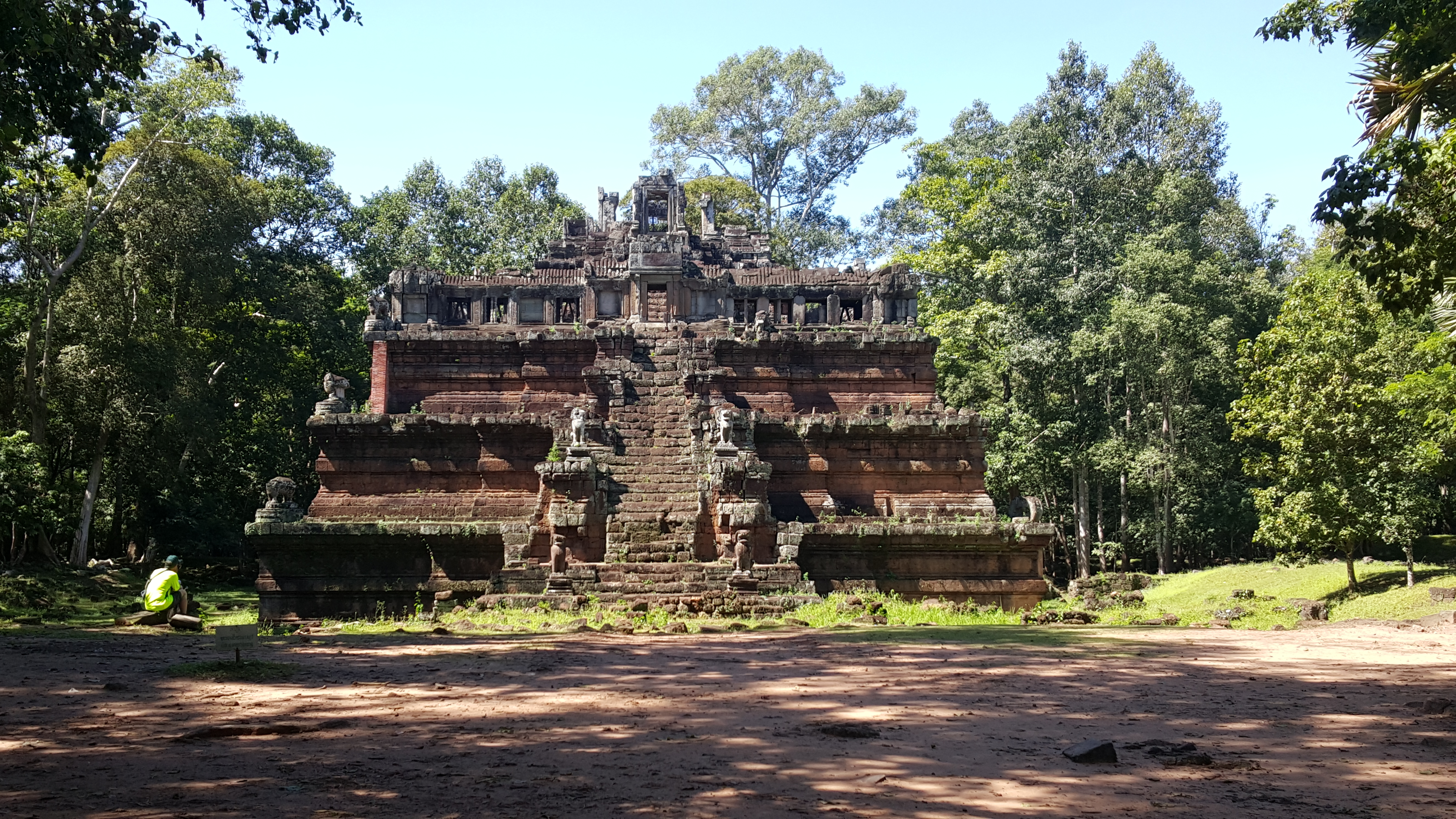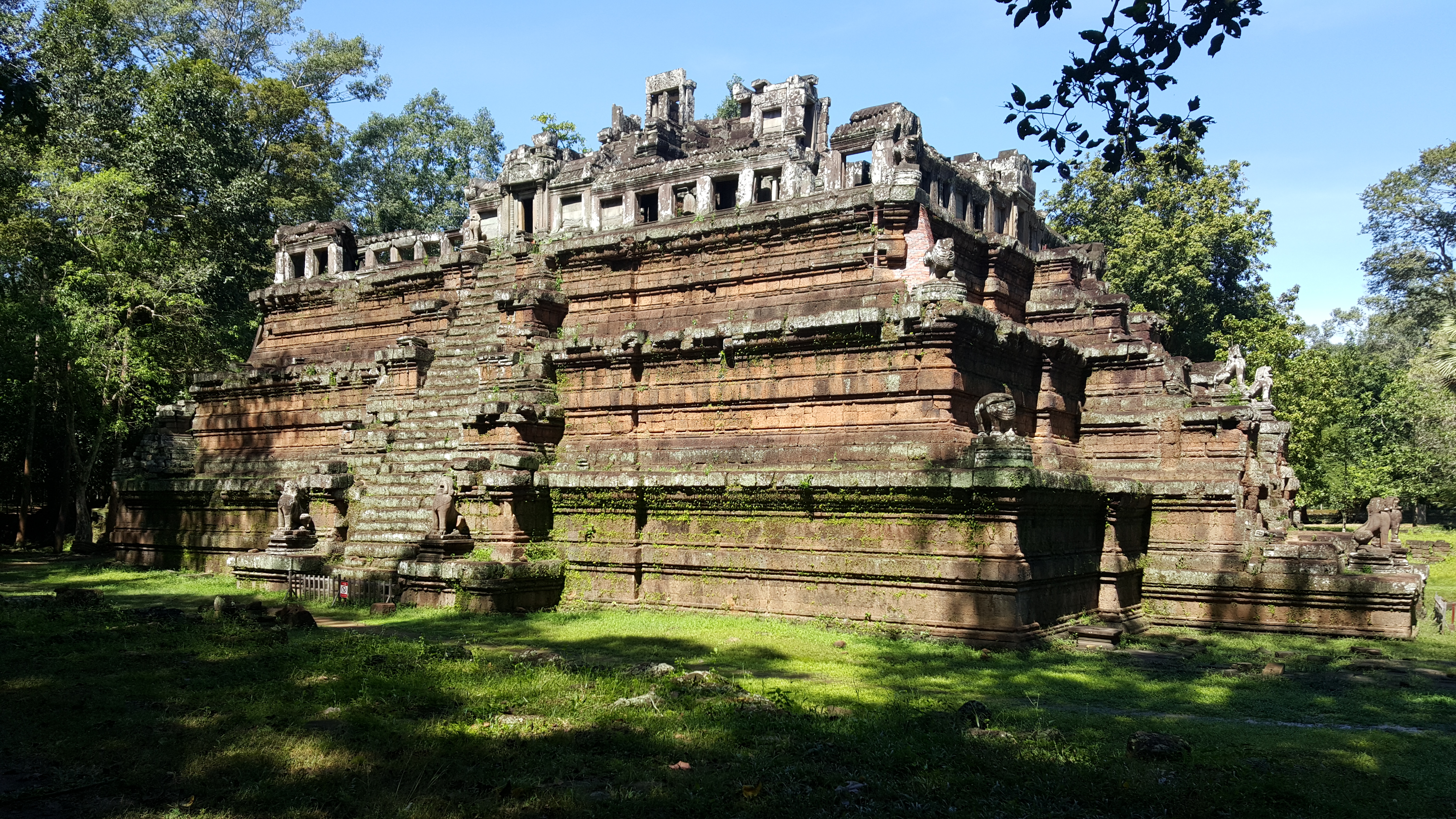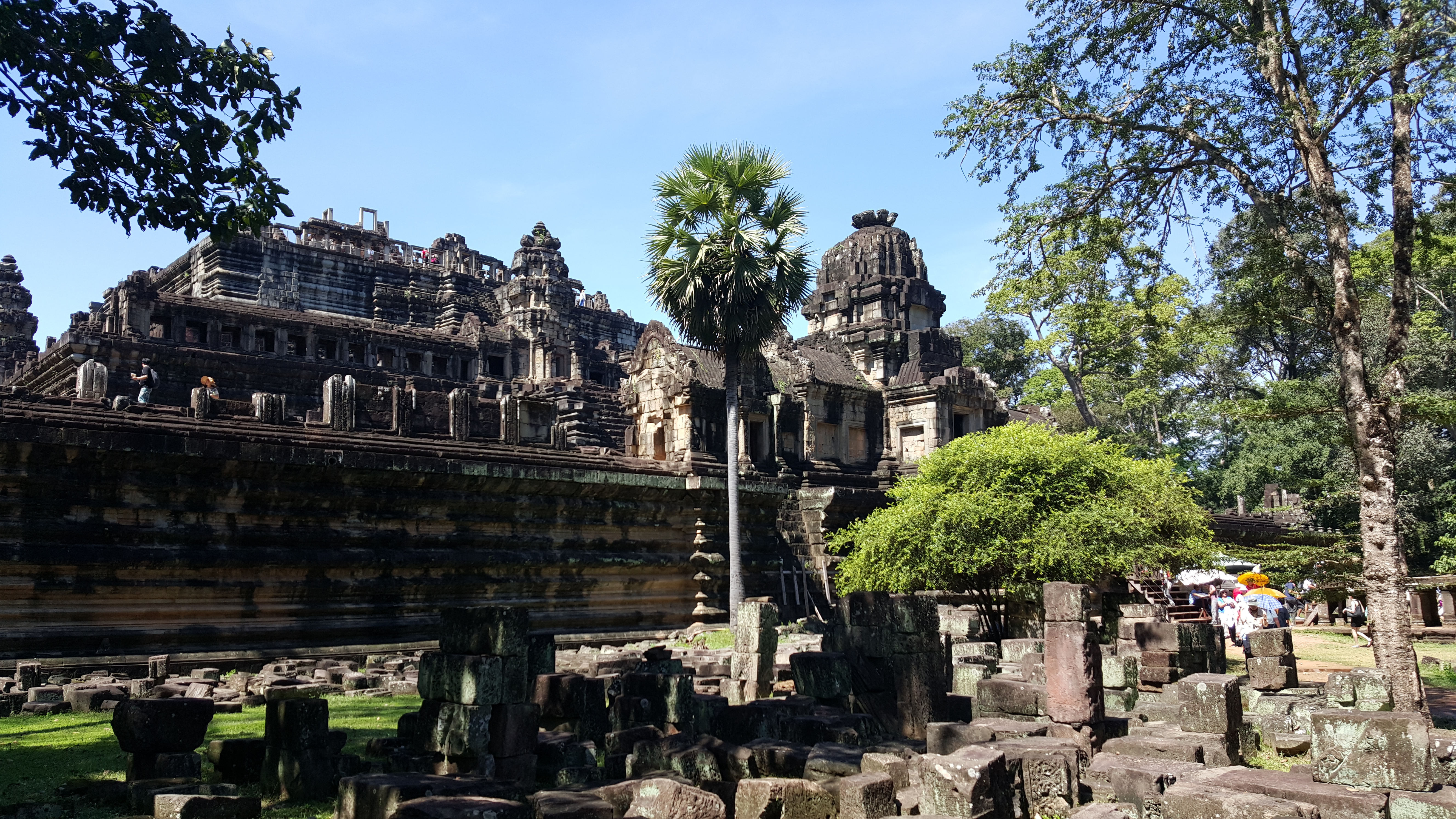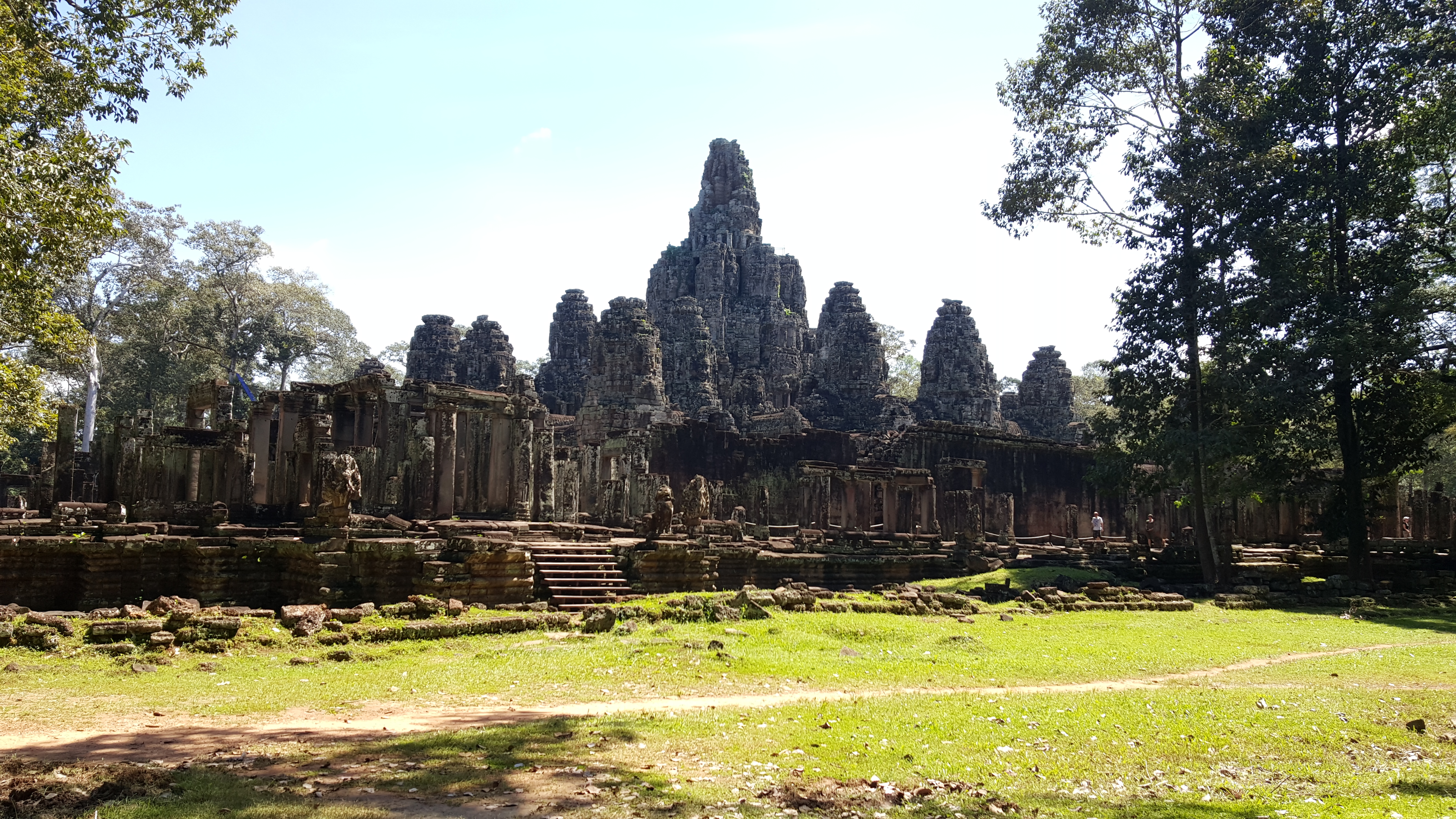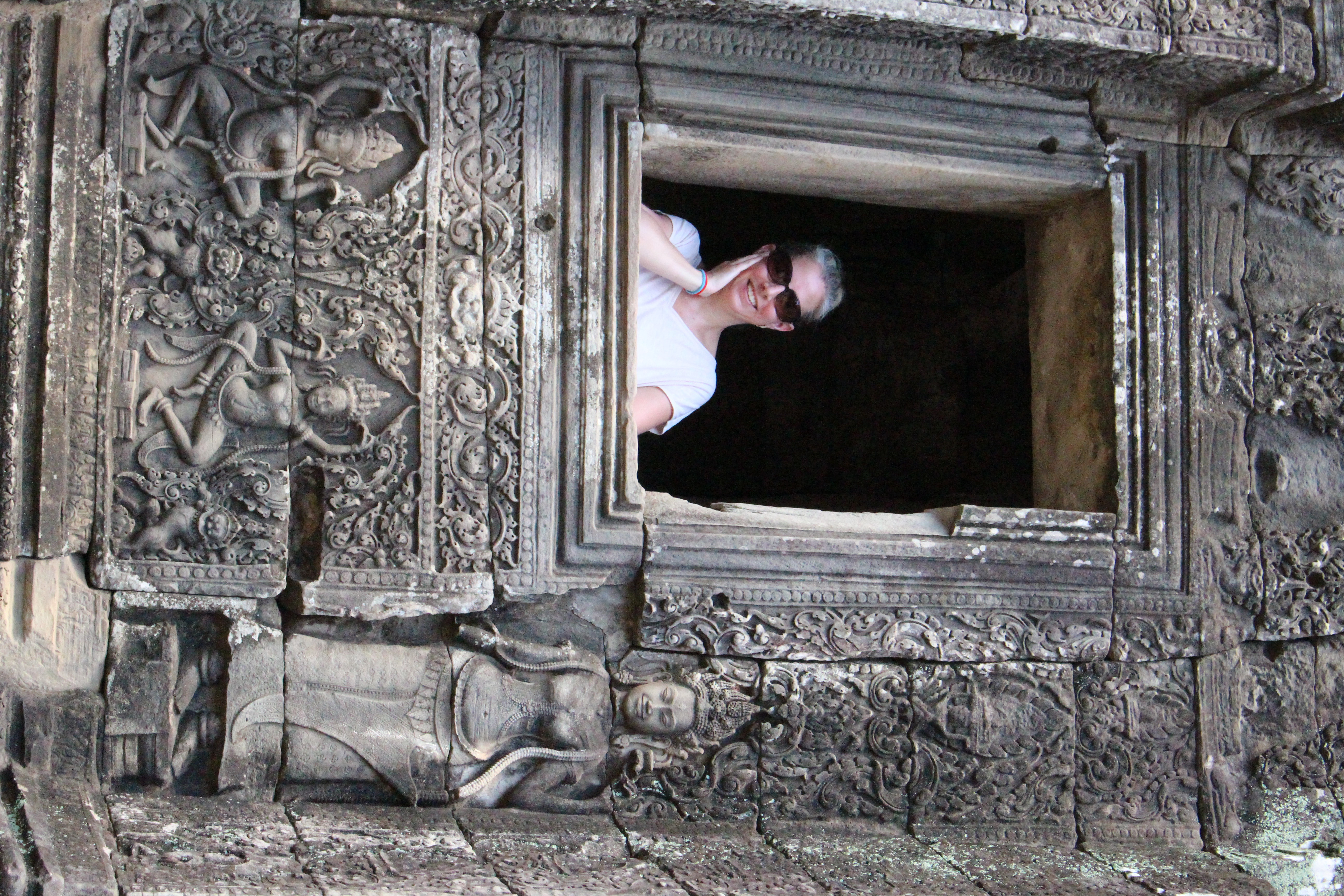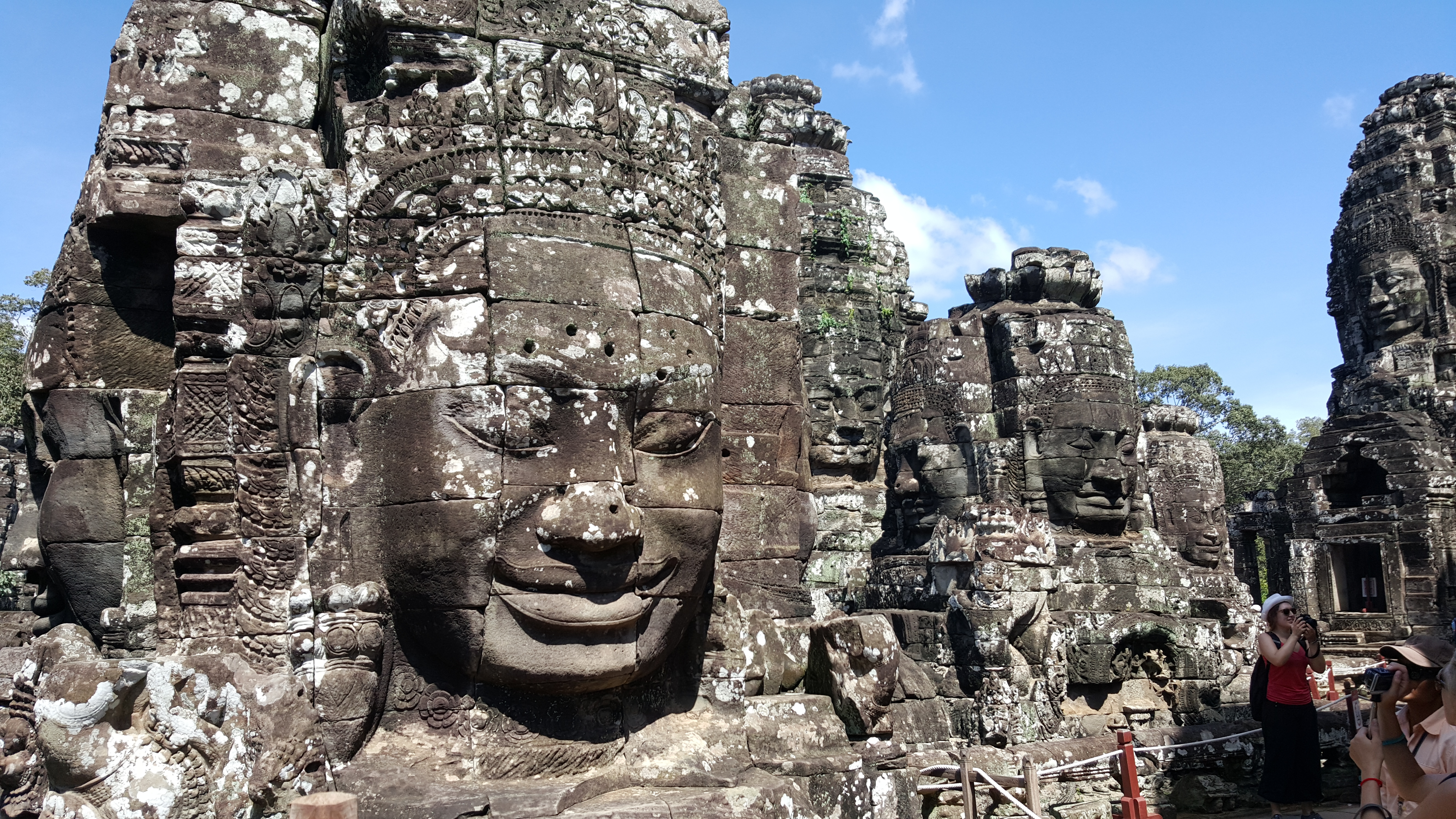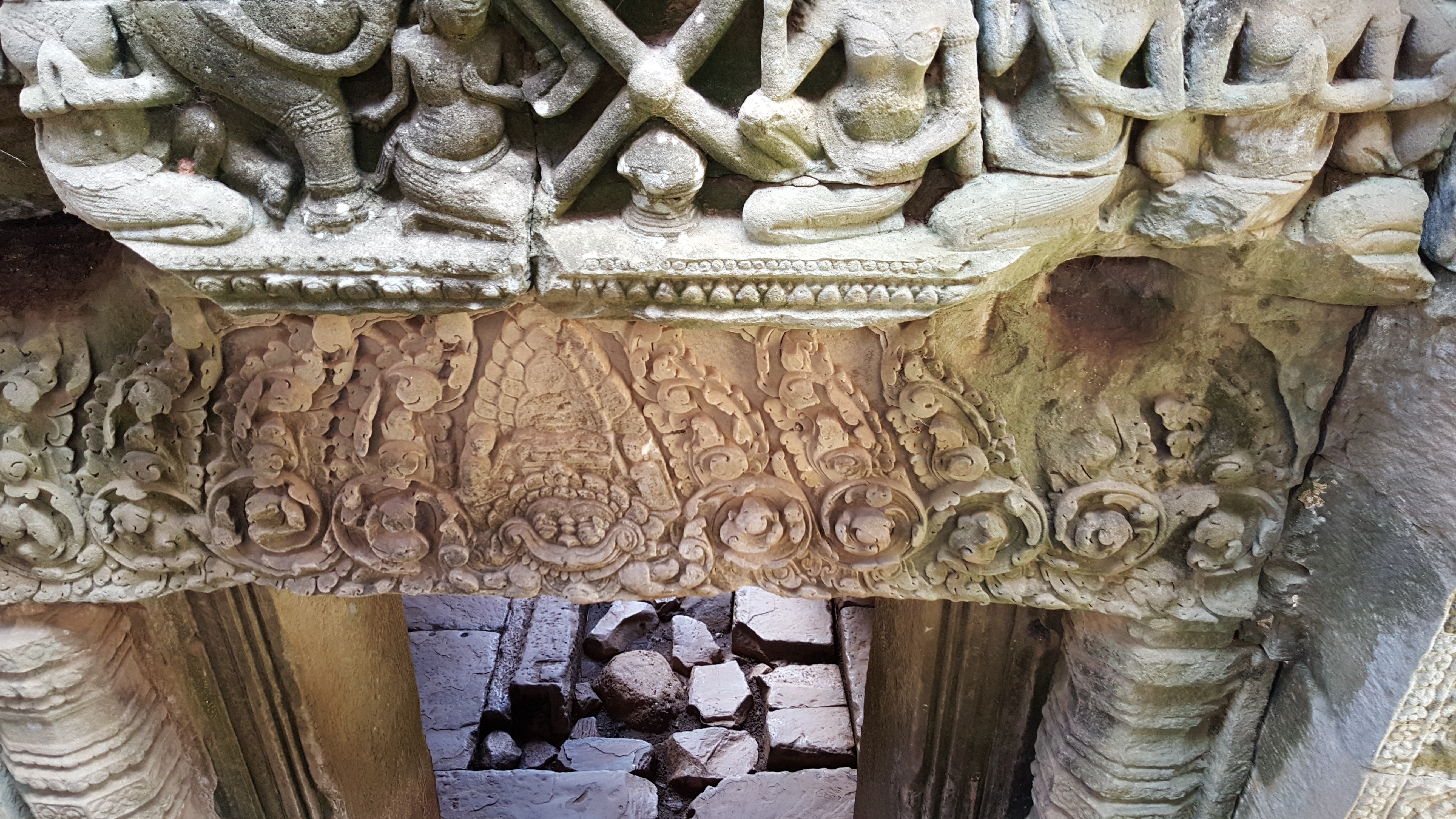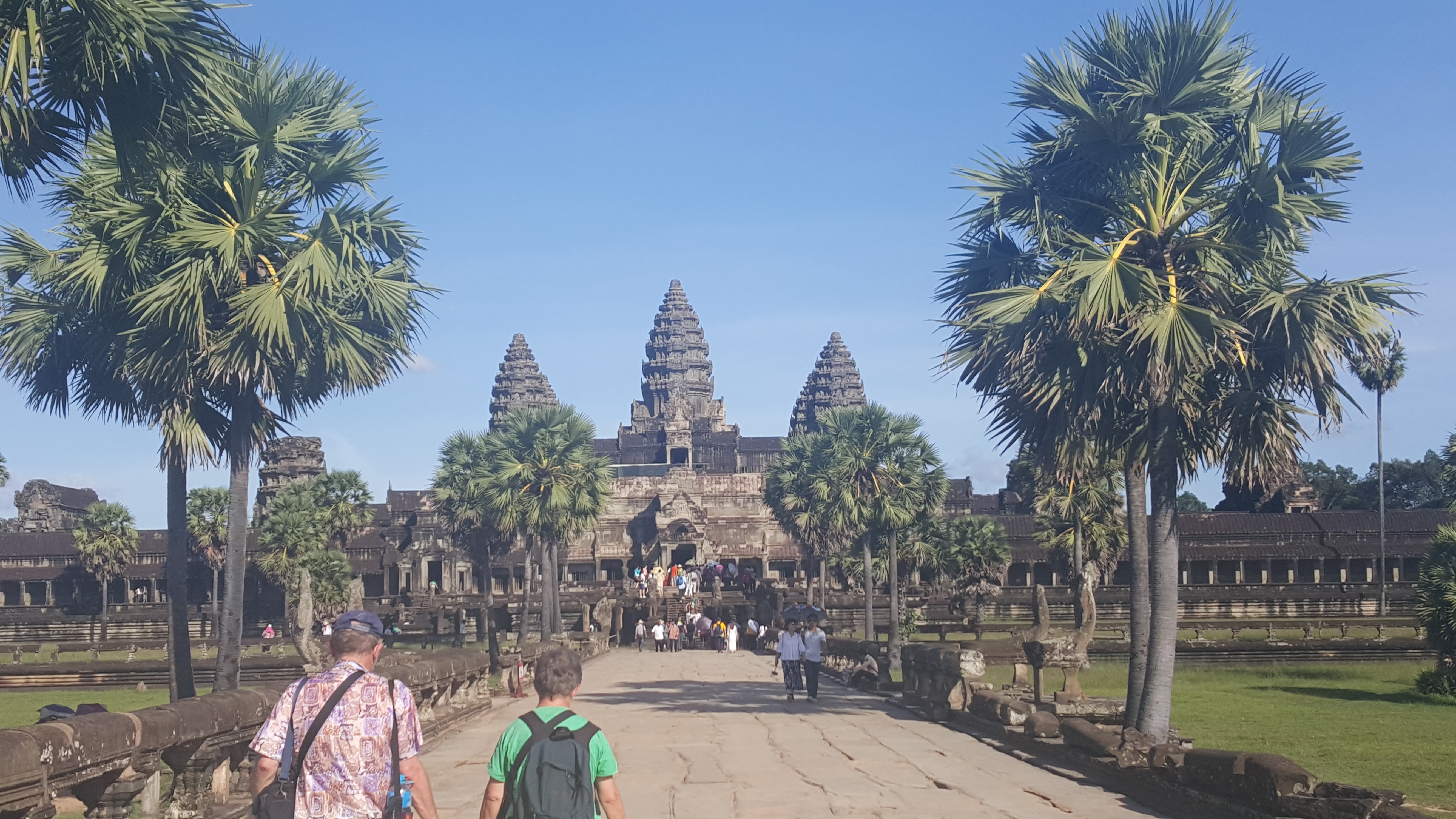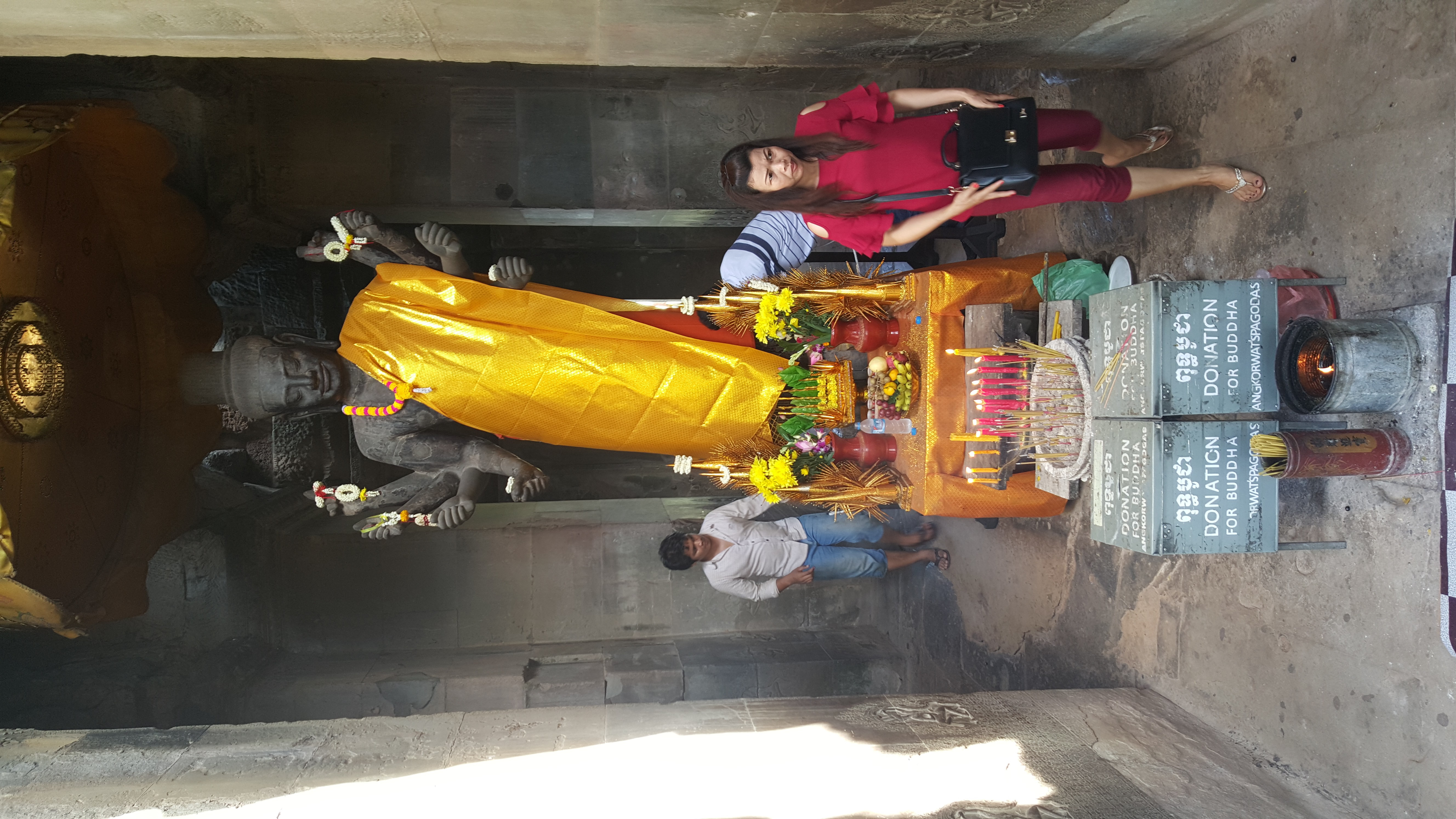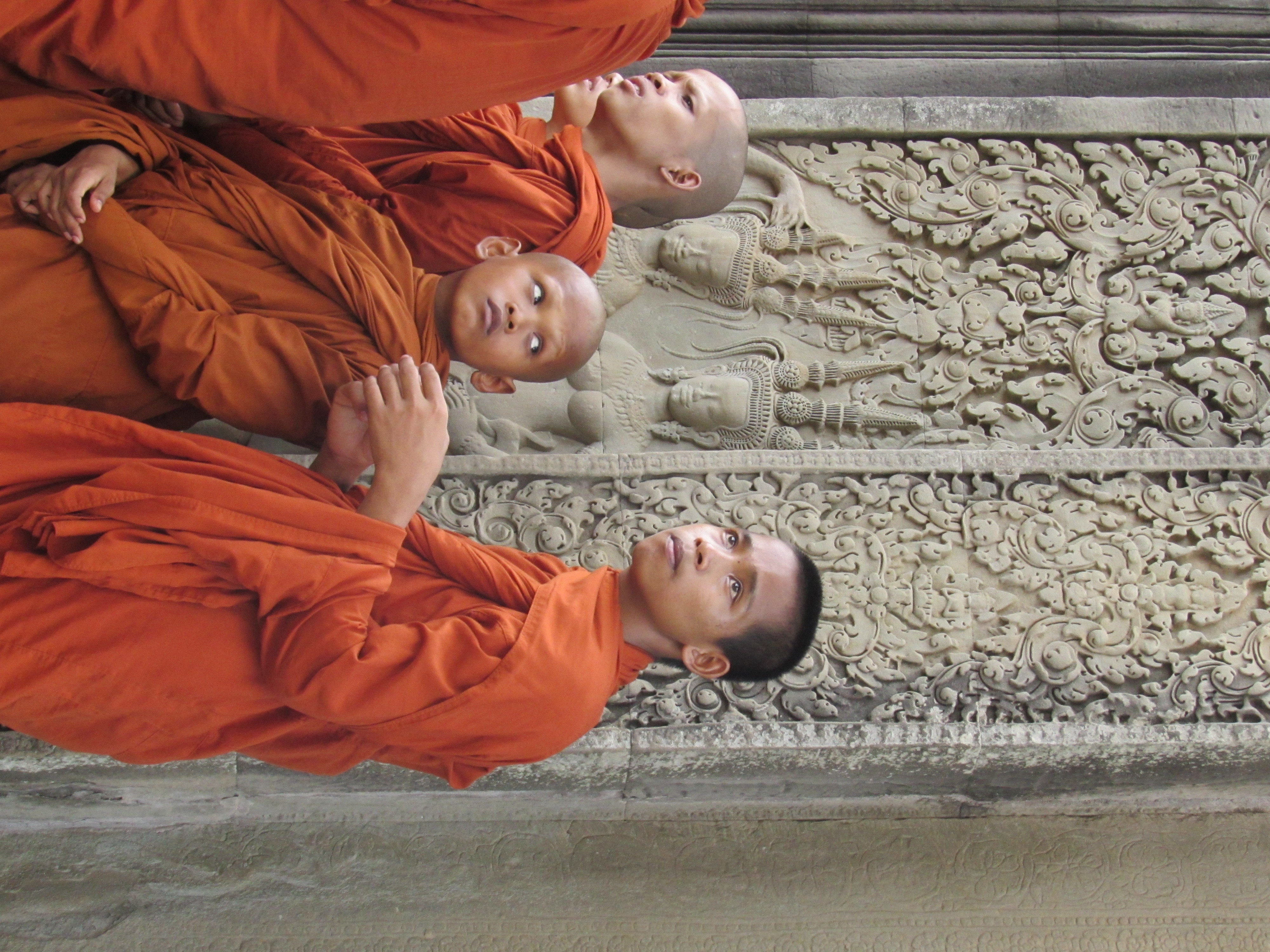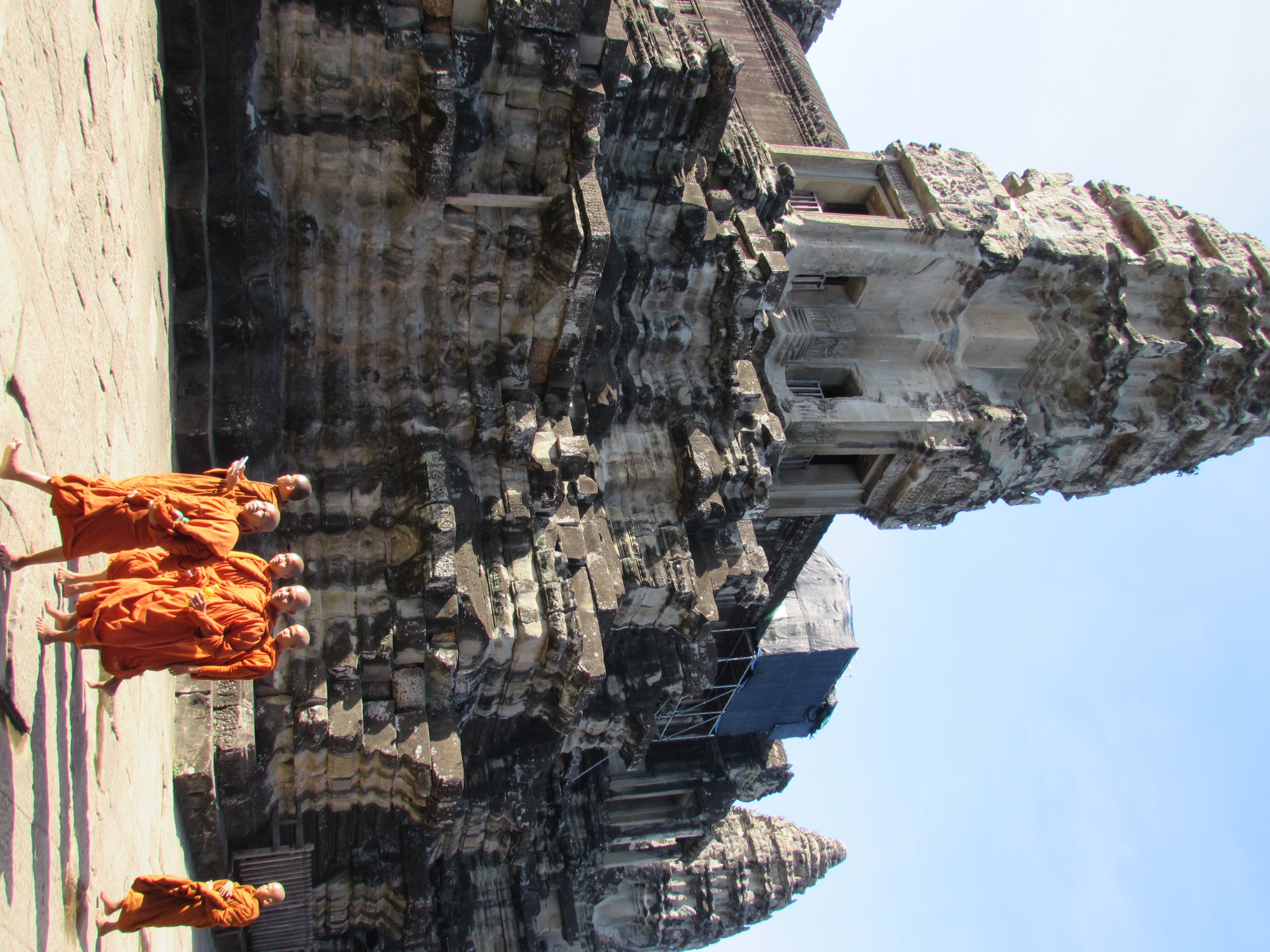Today was our most anticipated day of this entire odyssey. We hired a driver and an English speaking guide to show us the important sights for the day. It turned out to be a wise decision considering our unfamiliarity with the surroundings. Additionally, the guide gave us a lot history and perspective, and occasionally a better vantage point for photos. We were to take trip back in time to when kings erected massive temple complexes to honor their gods and to serve as capitals and strategic military posts. Cambodia’s Angkor period is defined by the 6 century ruling of the Khmer Empire during which many temples were erected.
TA PROHM Ta Prohm — translated to “ancestor Brahma” — was built between the 12th and 15th century. Brahma was the god who created knowledge and universe. Following the fall of the Khmer Empire in the 17th century, the temple was largely abandoned and began its decay. In the 21st century, many foreign nations began to see the archaeological, historical and cultural importance in Ta Prohm, as well as other Angkor temples. Money began to flow into construction projects headed by companies from different nations around the world in an attempt to preserve and/or restore many of these historical gems. Ta Prohm also has a little significance in pop culture as it was the prime location for much of the filming of Tomb Raider starring Angelina Jolie. Some have even nick-named it the Tomb Raider Temple.
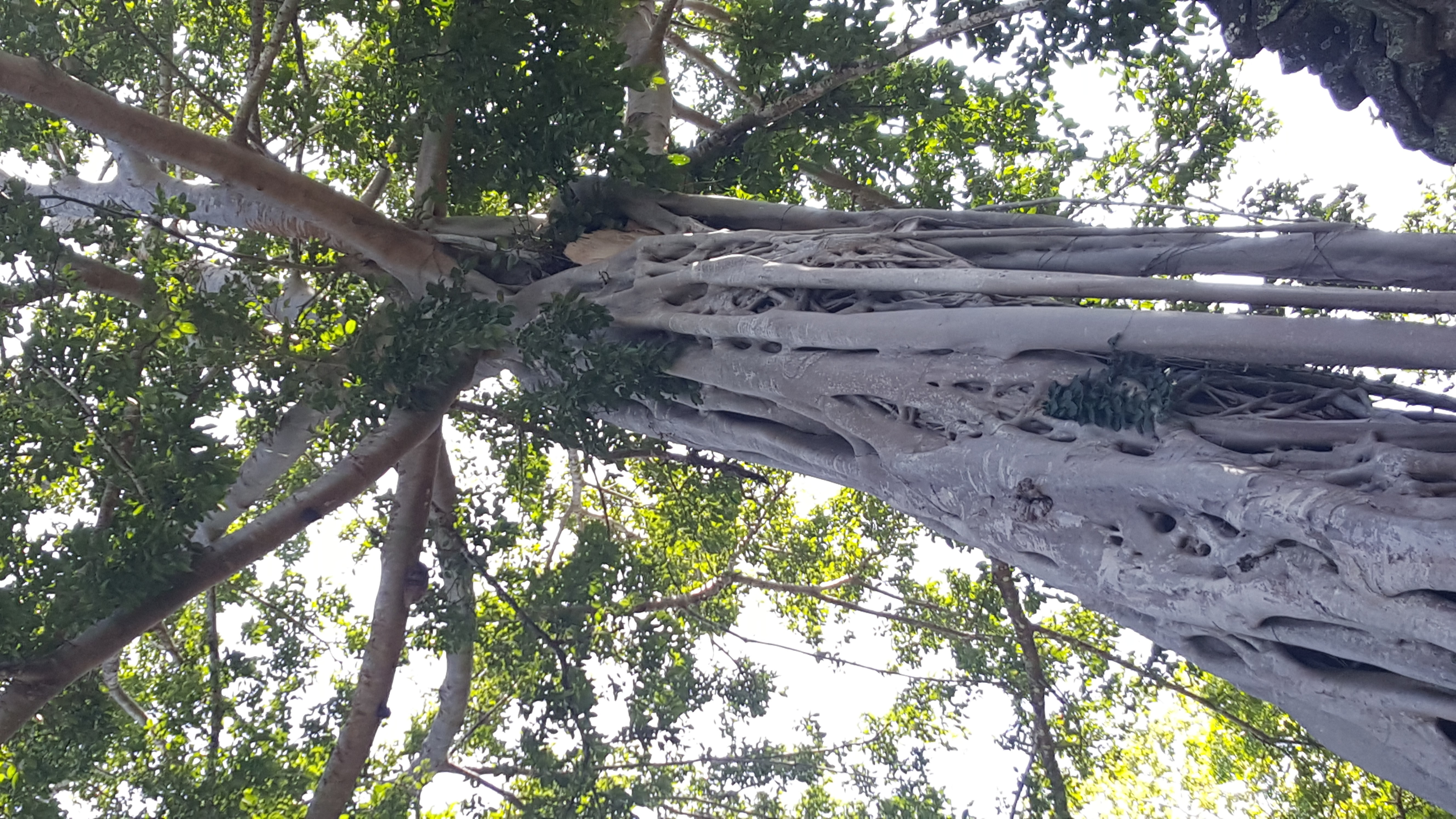 Nick-named the Angelina Jolie Tree.
Nick-named the Angelina Jolie Tree.
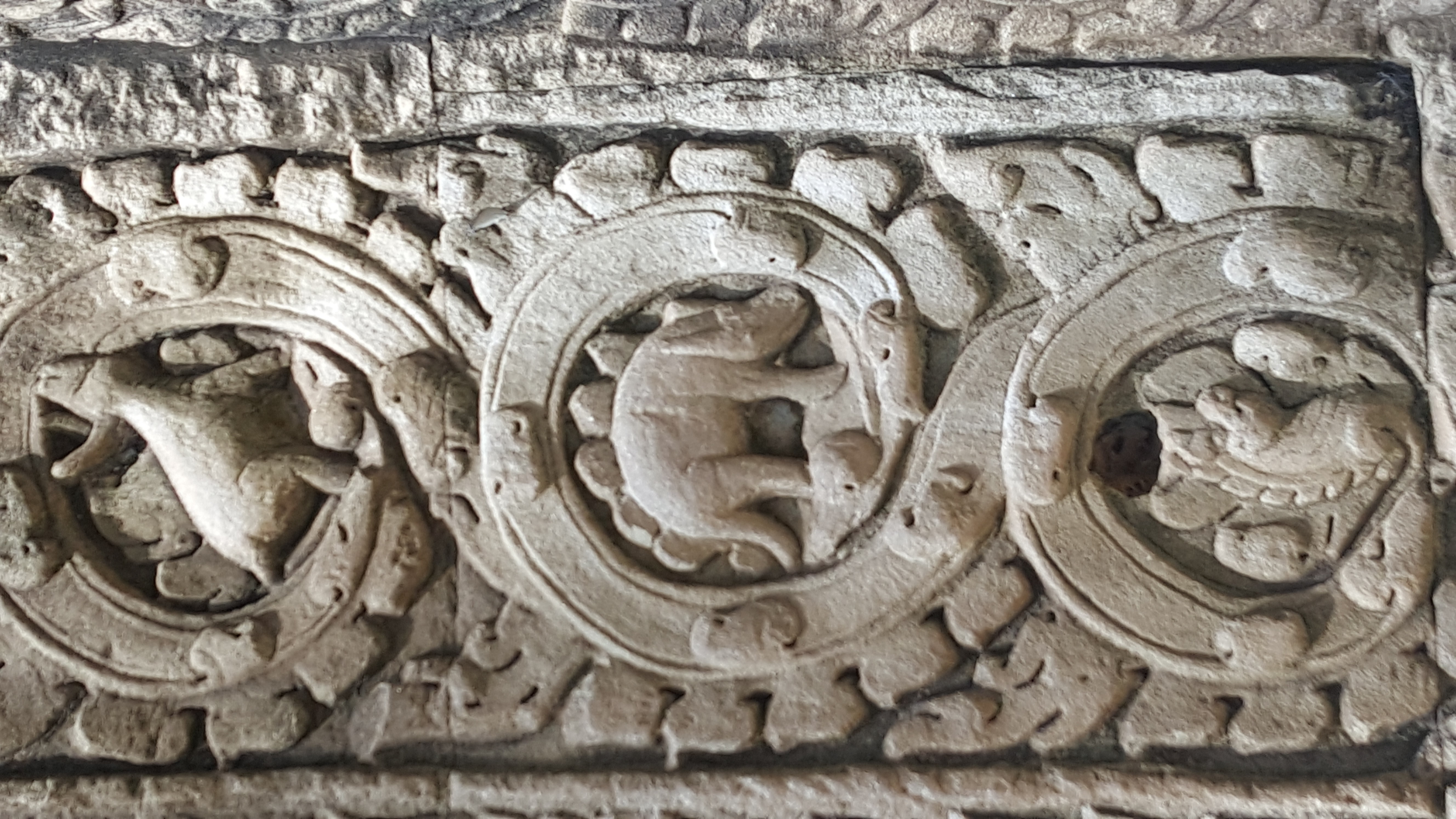 What did the Khmer know about the Stegosaurus?
What did the Khmer know about the Stegosaurus?
 I feel as though we’re being watched?
I feel as though we’re being watched?
Outside the temple was a band of landmine survivors playing traditional Cambodian music. During Cambodia’s turbulent history in the 1970’s and 1980’s landmines had been placed throughout the country by different governments and factions including Pol Pot and the Khmer Rouge. The Cambodian Mine Action Centre estimates that there may be as many as four to six million mines and other unexploded ordnances in Cambodia. Undetected mines still claim live every year. In 2013, 22 people were killed and 89 were injured one third of which were children.
TA KEO Ta Keo was a temple built by the Khmer starting near the end of the 10th century.
ANGKOR THOM Angkor Thom — translates literally to to “Great City” — was the last and most enduring capital city of the Khmer empire. Completed in the 13th century, this massive temple complex covers nearly 3.5 square miles and contains many temples; the most impressive being Bayon. Bayon is most noted for its 216 larger-than-life smiling faces carved in stone. Other breathtaking sights include the Phimeanakas temple and the Elephant Terrace.
 We were almost literally melting in the SE Asian heat!
We were almost literally melting in the SE Asian heat!
ANGKOR WAT Angkor Wat — meaning “Capital Temple” — is arguably the most impressive of all of Cambodia’s Temples. As it stands it is the largest religious monument in the world. It was originally constructed as a Hindu temple in the early 12th century, but had been gradually transformed into a Buddhist temple by the end of the 12th century.
With all of our anticipation on visiting the temple sites, we honestly felt a little overwelmed. Having a guide was helpful, but there still seemed to be a sense of urgency to get ALL of the shots — partially because of the heat, and partially the crowds. I felt a little disappointed leaving without some sense of heightened spirituality. If I were to make this journey again, I would probably plan to spend 2 whole days among the temples. One for looking though the lens; and one for looking through the eyes. Despite that little gripe, it truly was an amazing day.
